Forums
- Forums
- Axis And Allies Forum
- General Discussion
- Aviation News
Aviation News
Post a reply
- Go to Next topic
- Go to Welcome
- Go to Introduce Yourself
- Go to General Discussion
- Go to Screenshots, Images and Videos
- Go to Off topic
- Go to Works in Progress
- Go to Skinning Tips / Tutorials
- Go to Skin Requests
- Go to IJAAF Library
- Go to Luftwaffe Library
- Go to RAF Library
- Go to USAAF / USN Library
- Go to Misc Library
- Go to The Ops Room
- Go to Made in Germany
- Go to Campaigns and Missions
- Go to Works in Progress
- Go to Juri's Air-Raid Shelter
- Go to Campaigns and Missions
- Go to Works in Progress
- Go to Skinpacks
- Go to External Projects Discussion
- Go to Books & Resources
-
 Main AdminATLANTIC OCEAN (Jan. 27, 2016) - An E/2C Greyhound assigned to the Rawhides of Fleet Logistics Support Squadron (VRC) 40 performs an arrested landing on the flight deck of the aircraft carrier USS Dwight D. Eisenhower (CVN 69). Dwight D. Eisenhower is currently underway preparing for the upcoming Board of Inspection and Survey (INSURV) and conducting carrier qualifications. (U.S. Navy photo by Mass Communication Specialist 3rd Class Anderson W. Branch/Released)
Main AdminATLANTIC OCEAN (Jan. 27, 2016) - An E/2C Greyhound assigned to the Rawhides of Fleet Logistics Support Squadron (VRC) 40 performs an arrested landing on the flight deck of the aircraft carrier USS Dwight D. Eisenhower (CVN 69). Dwight D. Eisenhower is currently underway preparing for the upcoming Board of Inspection and Survey (INSURV) and conducting carrier qualifications. (U.S. Navy photo by Mass Communication Specialist 3rd Class Anderson W. Branch/Released)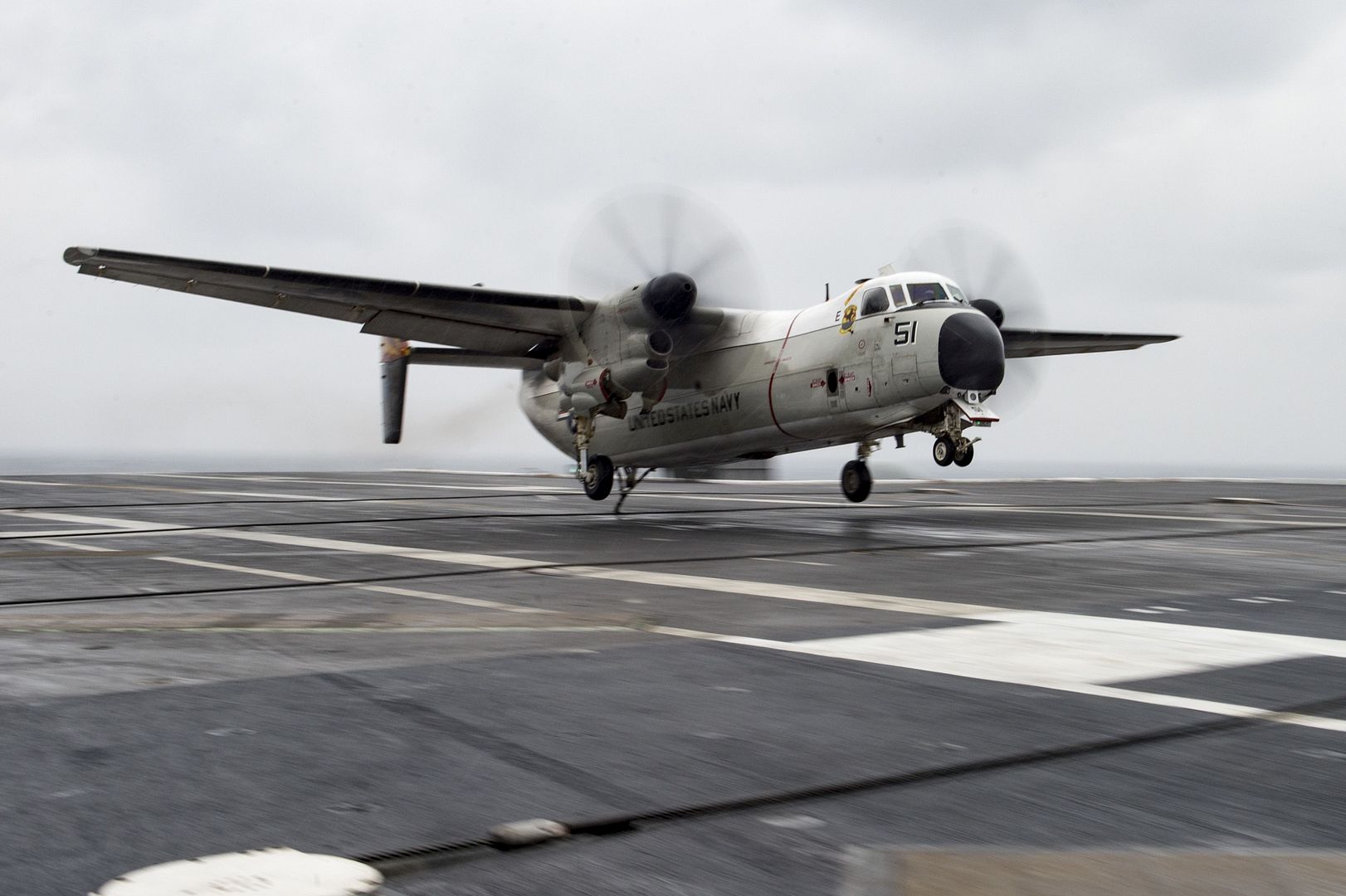
A U.S. Air Force F-22 Raptor descends after receiving fuel from a USAF KC-135 Stratotanker over the Arabian Sea in support of Operation Inherent Resolve, Jan. 27, 2016. The F-22 is a fifth-generation aircraft and is designed to engage in air-to-air and air-to-ground missions. OIR is the coalition intervention against the Islamic State of Iraq and the Levant. (U.S. Air Force photo by Staff Sgt. Corey Hook/Released)
-
9 years agoSat Jan 30 2016, 02:52pm
 Main AdminZURICH, Jan. 29, 2016 /PRNewswire/ -- Boeing (NYSE: BA) and Swiss International Air Lines (SWISS) are celebrating the delivery of the airline's first 777-300ER (Extended Range). The latest addition to SWISS' fleet touched down in Zurich today following a non-stop 4,545 nautical miles (8,418 kilometers) delivery flight from Boeing's Everett Delivery Center in Everett, WA.
Main AdminZURICH, Jan. 29, 2016 /PRNewswire/ -- Boeing (NYSE: BA) and Swiss International Air Lines (SWISS) are celebrating the delivery of the airline's first 777-300ER (Extended Range). The latest addition to SWISS' fleet touched down in Zurich today following a non-stop 4,545 nautical miles (8,418 kilometers) delivery flight from Boeing's Everett Delivery Center in Everett, WA.
"The delivery of our first flagship marks a new era in Switzerland's aviation history," said Harry Hohmeister, CEO of SWISS. "As of today, our customers will enjoy a new dimension of air travel experience."
The 777-300ER is the new flagship of SWISS' long-haul fleet and is configured with 340 seats, eight in First Class, 62 in Business Class and 270 in Economy, with wireless internet connectivity throughout. SWISS' 777-300ER will feature a totally redesigned cabin interior to enhance passenger comfort and will be initially deployed on the airline's service between Zurich-New York JFK.
"We are honored that a carrier as prestigious as SWISS is now our newest Boeing 777 operator," said Boeing Commercial Airplanes President and CEO Ray Conner. "The 777-300ER will provide SWISS' network with greatly improved efficiencies and it's a great source of pride for everyone at Boeing that the carrier will utilize this outstanding airplane as its flagship."
The 777-300ER is one of the most fuel and cost-efficient airplanes in its class and is the most reliable twin-aisle aircraft in the world with an on-time departure rate of 99.5 percent. It also has the highest cargo capability of any passenger airplane in service. In addition to this delivery, SWISS has eight unfilled 777-300ERs on order from Boeing.
SWISS is part of the Lufthansa Group, serving 104 destinations in 48 countries from the Swiss cities of Zurich and Geneva, carrying more than 16 million passengers a year with a fleet of 92 airplanes.
A U.S. Air Force F-16 Fighting Falcon from the 18th Aggressor Squadron at Eielson Air Force Base, Alaska, flies in support of Forceful Tiger Jan. 28, 2016, near Okinawa, Japan. The 18th AGRS, which opened Aug. 24, 2007, provides challenging, yet realistic threat replication training in order to prepare Air Force, joint and allied aircrews for potential aerial combat. (U.S. Air Force photo by Staff Sgt. Maeson L. Elleman)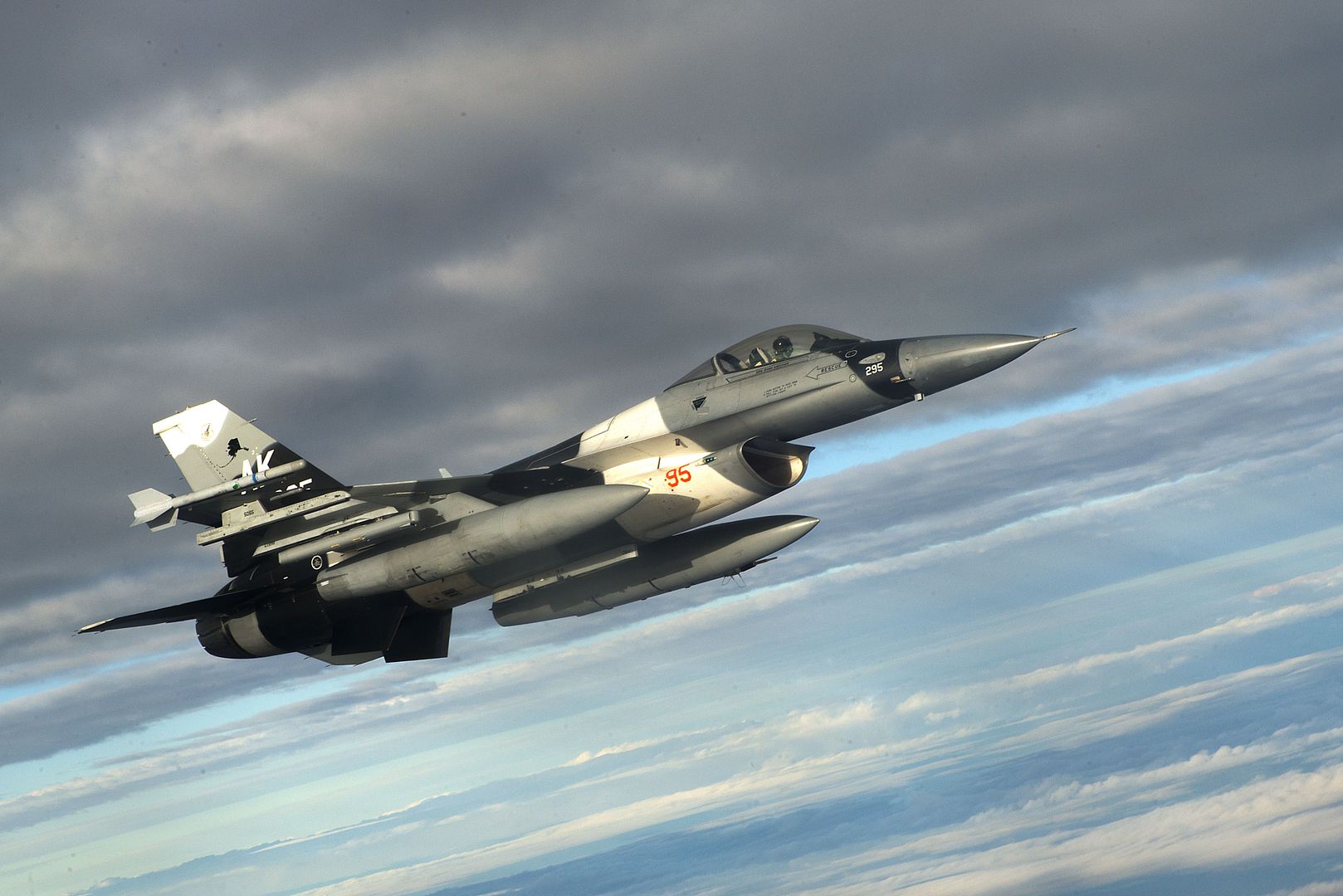
SEATTLE, January 29, 2016 ? Boeing [NYSE: BA] will further equip the U.S. Navy and Royal Australian Air Force (RAAF) with maritime patrol capabilities, building 20 more P-8A Poseidon aircraft following a $2.5 billion U.S. Navy order announced yesterday.
The contract, for Lot 7 of the total P-8A program of record, includes 16 aircraft for the U.S. Navy and the next four aircraft for the RAAF. The RAAF?s initial four P-8A aircraft were included in the August 2015 Lot 6 contract award.
?We continue to hear feedback from our Navy customer about the incredible capabilities of the P-8A,? said James Dodd, Boeing vice president and program manager of P-8 Programs. ?The deployed squadrons tell us it?s exceeding expectations ? we?re looking forward to providing even more capability to the fleet and to Australia.?
This latest award puts Boeing on contract to build 78 Poseidons for the Navy and eight for the Australian fleet, with 33 Poseidons delivered to the U.S. Navy to date. The Lot 7 aircraft will begin delivery in late 2017.
Based on Boeing?s Next-Generation 737-800 commercial airplane, the P-8A offers the worlds? most advanced anti-submarine, anti-surface warfare and intelligence, surveillance and reconnaissance capabilities. The Navy has deployed four P-8A patrol squadrons since operations began in 2013.
Australia?s participation in the P-8A program began in 2009 when the government signed the first in a series of memorandums of understanding to work with the U.S. Navy on system design and development. The U.S. Navy and the RAAF also established a joint program office that operates at Naval Air Station Patuxent River, Md. The first Australian P-8A will be delivered to the RAAF in late 2016.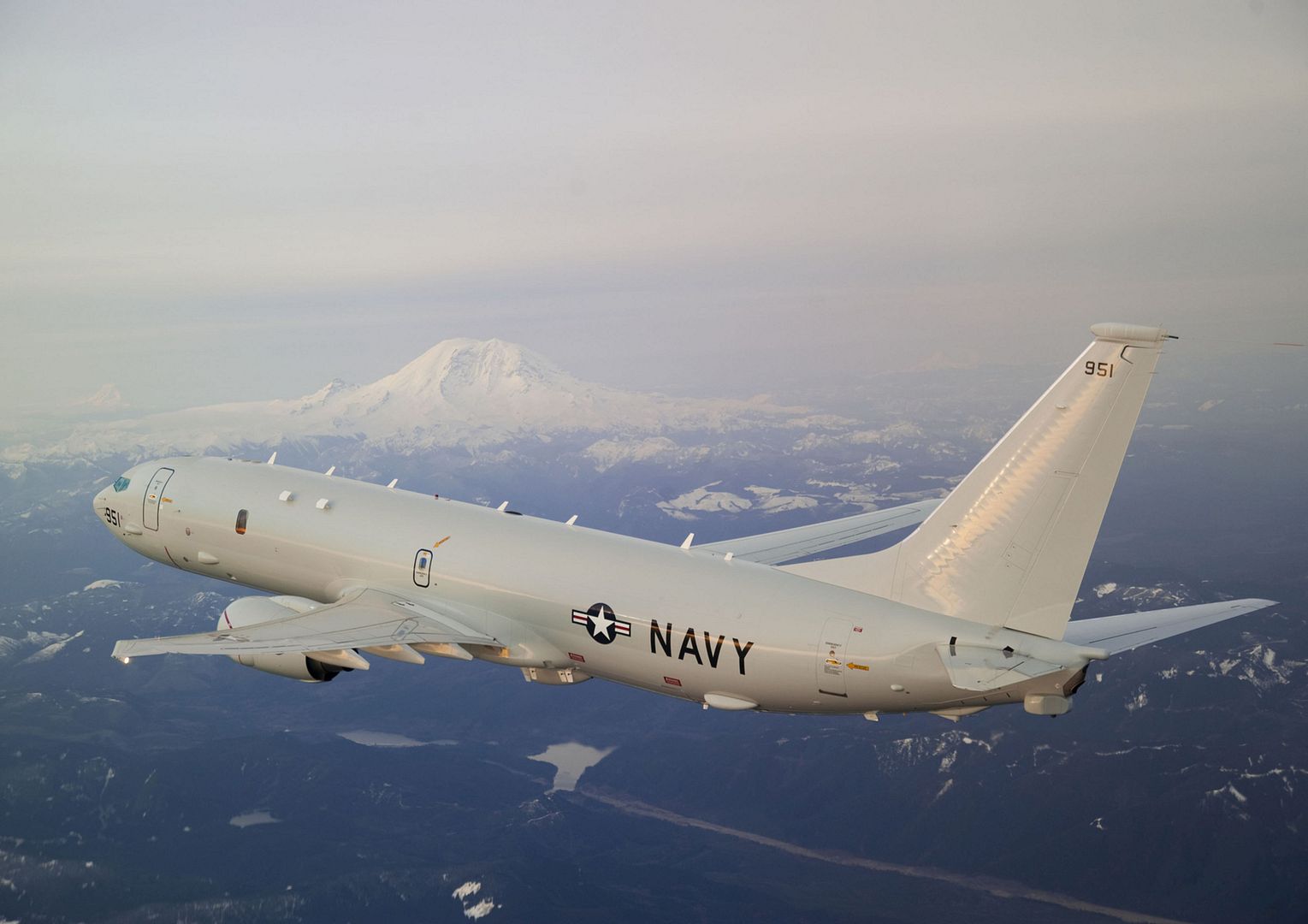
SEATTLE, Jan. 29, 2016 /PRNewswire/ -- The Boeing [NYSE: BA] 737 MAX 8 took to the skies for the first time today. The 737 MAX program achieved the milestone on schedule which begins a comprehensive flight-test program leading to certification and delivery.
With the latest technology LEAP-1B engines from CFM International and Boeing-designed Advanced Technology winglets, the first member of the efficient 737 MAX family completed a two-hour, 47-minute flight, taking off from Renton Field in Renton, Wash., at 9:46 a.m. local time and landing at 12:33 p.m. at Seattle's Boeing Field.
"Today's first flight of the 737 MAX carries us across the threshold of a new century of innovation ? one driven by the same passion and ingenuity that have made this company great for 100 years," said Boeing Commercial Airplanes President and Chief Executive Officer Ray Conner. "We are tremendously proud to begin testing an airplane that will deliver unprecedented fuel efficiency in the single-aisle market for our customers."
During the flight, 737 MAX Chief Pilot Ed Wilson and Boeing Chief Test Pilot and Vice President of Flight Operations Craig Bomben departed to the north, reaching a maximum altitude of 25,000 feet (7,620 meters) and an airspeed of 250 knots, or about 288 miles (463 kilometers) per hour typical of a first flight sequence. While Capts. Wilson and Bomben tested the airplane's systems and structures, onboard equipment transmitted real-time data to a flight-test team on the ground in Seattle.
"The flight was a success," said Wilson. "The 737 MAX just felt right in flight giving us complete confidence that this airplane will meet our customers' expectations."
With the other three members of the 737 MAX 8 flight-test fleet currently in different stages of final assembly, the 737 MAX remains on track for first delivery to Southwest Airlines in the third quarter of 2017.
The new 737 MAX 8 will deliver the highest efficiency, reliability and passenger comfort in the single-aisle market with 20 percent lower fuel use than the first Next-Generation 737s ? and 8 percent per seat lower operating costs than the A320neo. The 737 MAX 8 is the first member in Boeing's new family of single-aisle airplanes ? the 737 MAX 7, MAX 8, MAX 200 and MAX 9 ? to begin flight testing. The 737 MAX will extend the Next-Generation 737 range advantage with the capability to fly more than 3,500 nautical miles (6,510 km), an increase of 340 - 570 nmi (629-1,055 km) over the Next-Generation 737. The 737 MAX family has 3,072 orders from 62 customers worldwide.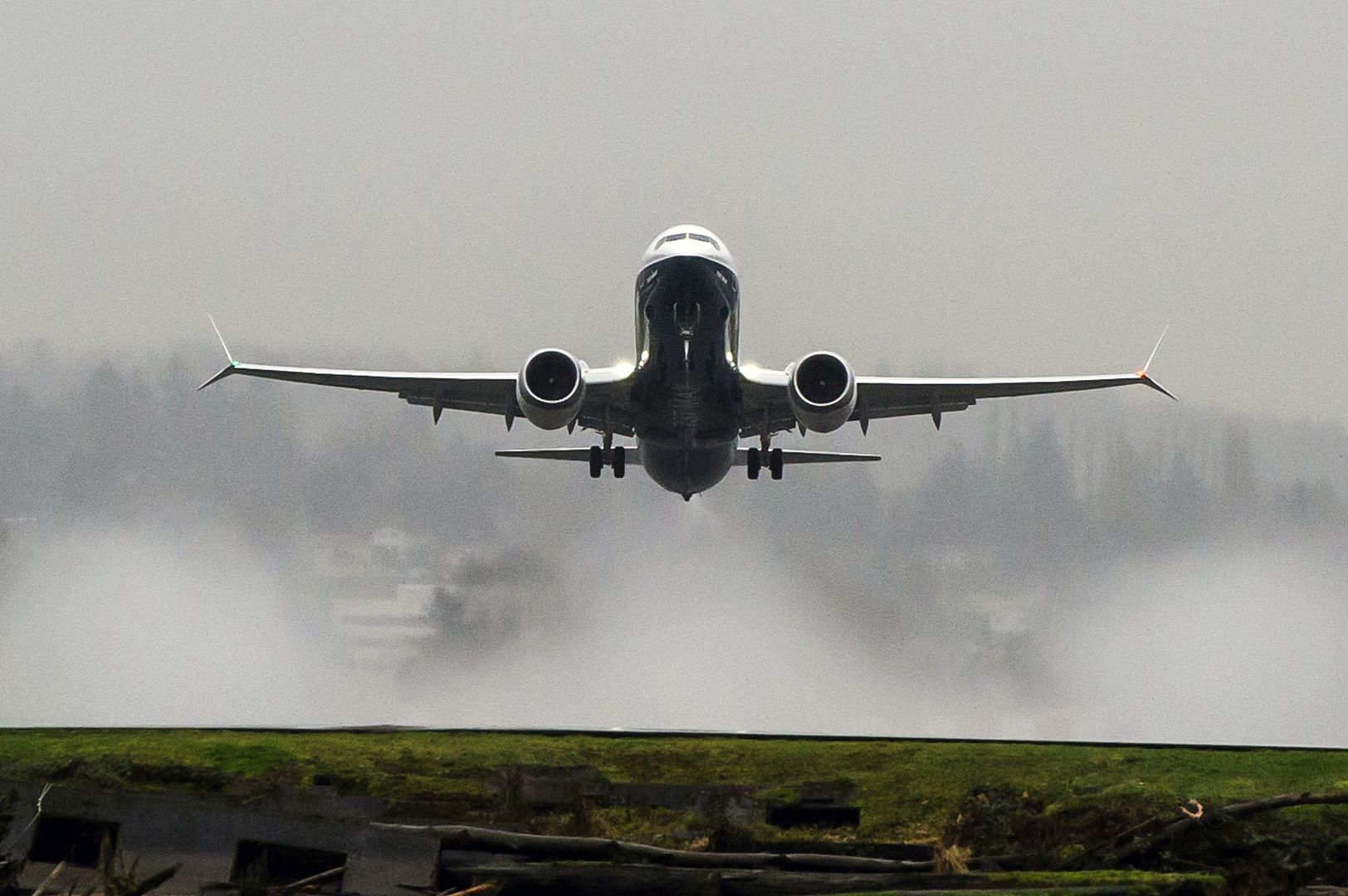
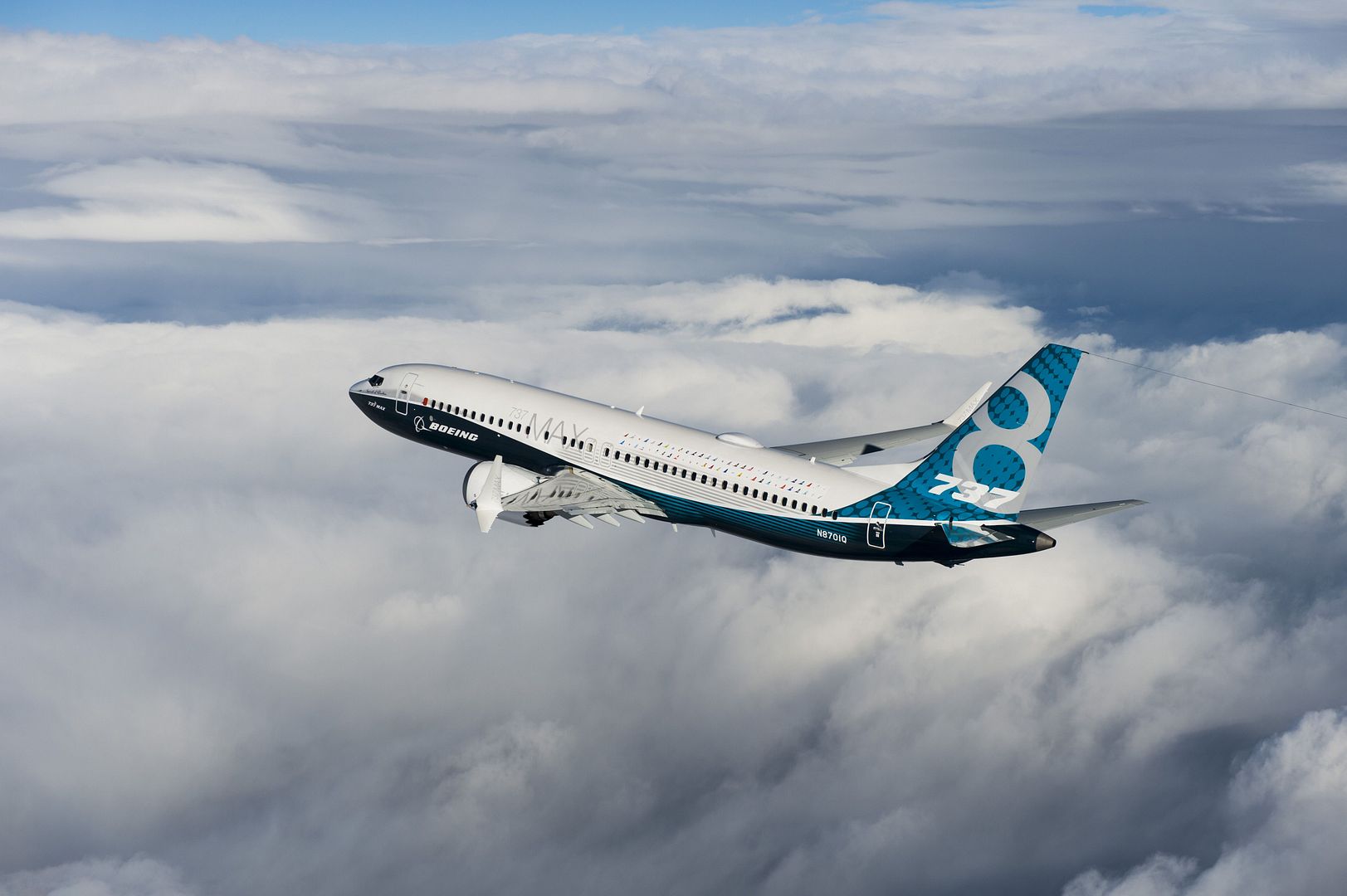

ATLANTIC OCEAN (Jan. 29, 2016) ? Capt. Paul C. Spedero Jr., commanding officer of USS Dwight D. Eisenhower (CVN 69), taxis an F/A-18F Super Hornet assigned to the Gladiators of Strike Fighter Squadron (VFA) 106 on the flight deck the aircraft carrier. Dwight D. Eisenhower is currently underway preparing for the upcoming Board of Inspection and Survey (INSURV) and conducting carrier qualifications. (U.S. Navy photo by Mass Communication Specialist 3rd Class Jameson E. Lynch/Released)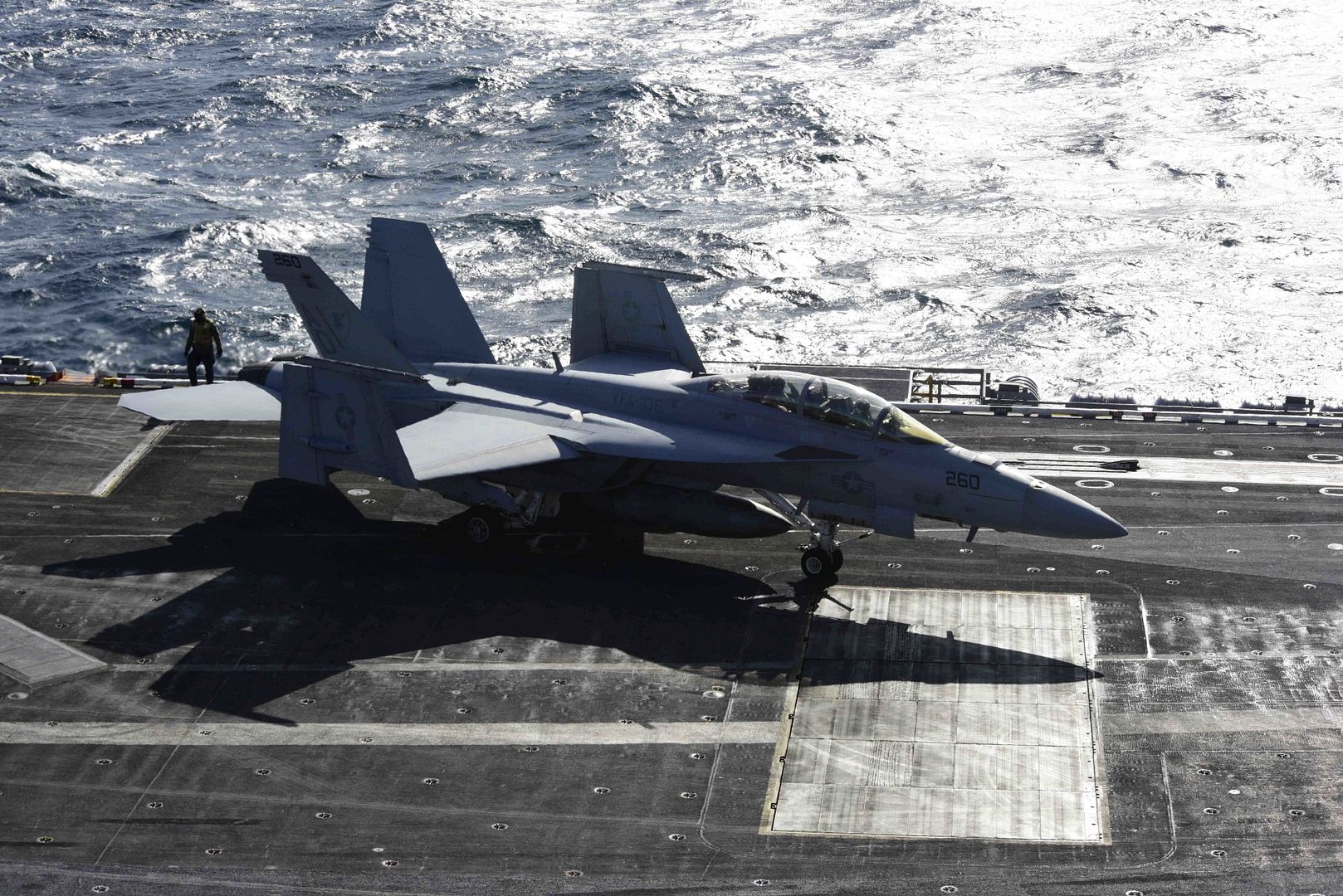
-
 Main AdminA crew chief from the 169th Fighter Wing, McEntire Joint National Guard Base, S.C., conducts a maintenance check on an F-16 Fighting Falcon Jan. 26, 2016, during exercise Red Flag 16-1 at Nellis Air Force Base, Nev. Red Flag prepares maintenance personnel, ground controllers and space and cyber operators to support realistic combat-like situations within the same tactical environment. (U.S. Air Force photo by Master Sgt. Burt Traynor/Released)
Main AdminA crew chief from the 169th Fighter Wing, McEntire Joint National Guard Base, S.C., conducts a maintenance check on an F-16 Fighting Falcon Jan. 26, 2016, during exercise Red Flag 16-1 at Nellis Air Force Base, Nev. Red Flag prepares maintenance personnel, ground controllers and space and cyber operators to support realistic combat-like situations within the same tactical environment. (U.S. Air Force photo by Master Sgt. Burt Traynor/Released)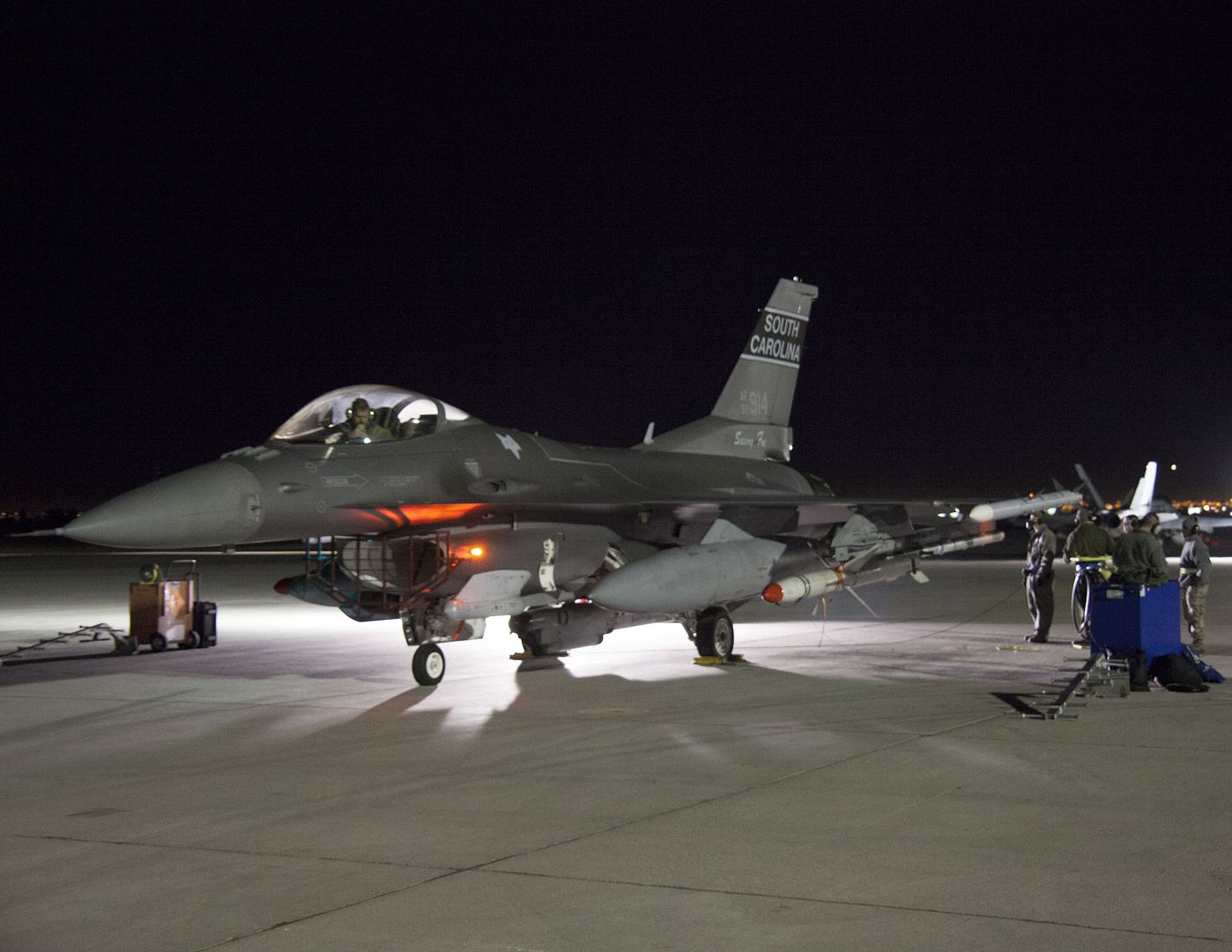
An F-15C Eagle assigned to the 131st Fighter Squadron, Barnes Air National Guard Base, Mass., flies beside a KC-135 Stratotanker after refueling during a Red Flag 16-1 training mission over the Nevada Test and Training Range Jan. 28, 2016. The concept of Red Flag was developed by Maj. Moody Suter to simulate the first 10 combat missions pilots would face. (U.S. Air Force photo by Master Sgt. Burt Traynor/Released)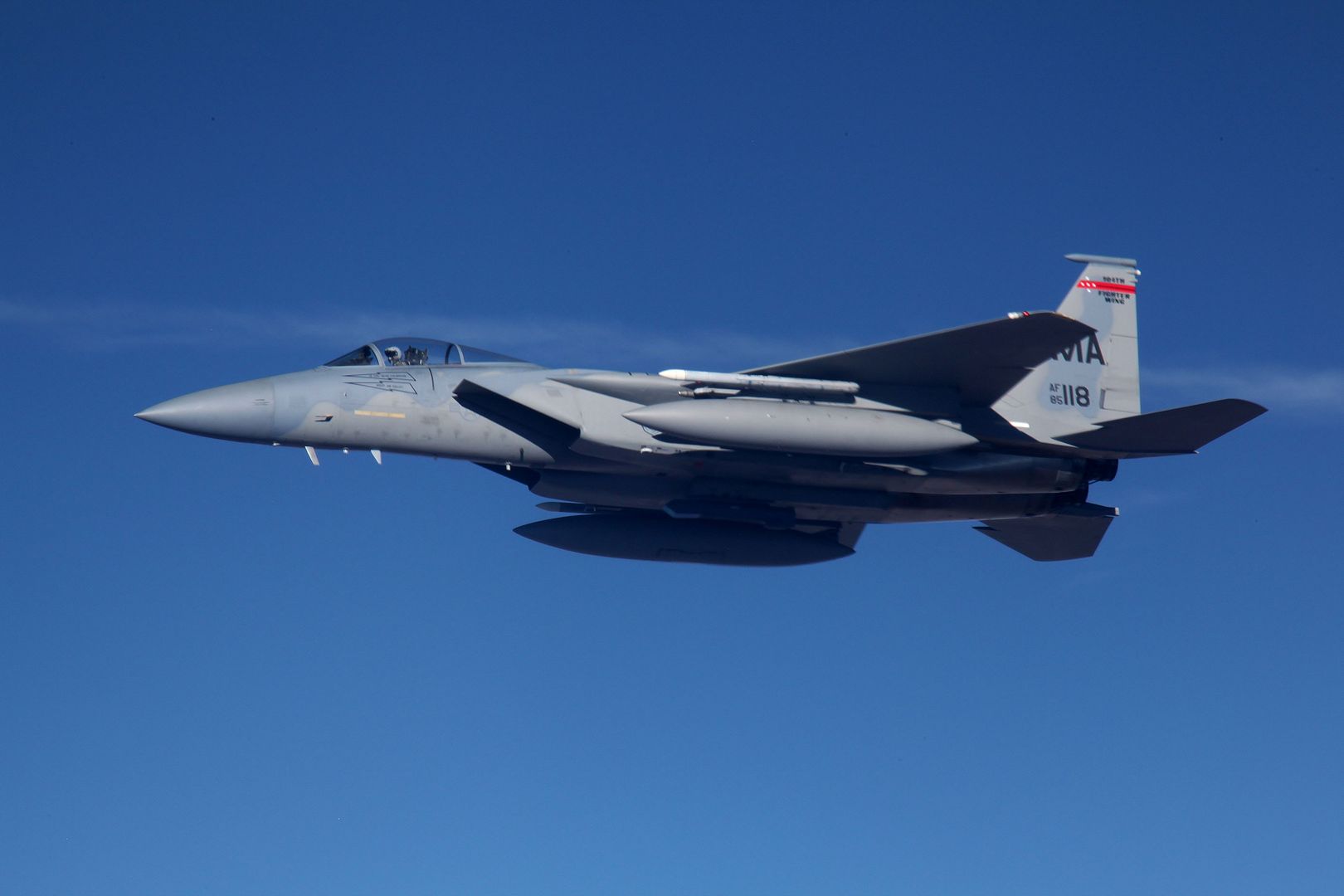
An F-16 Fighting Falcon with the 157th Fighter Squadron, McEntire Joint National Guard Base, S.C., flies beside a KC-135 Stratotanker over the Nevada Test and Training Range Jan. 28, 2016, during exercise Red Flag-16-1. In an air combat role, the F-16s maneuverability and combat radius exceed that of all potential threat fighter aircraft. (U.S. Air Force photo by Master Sgt. Burt Traynor/Released)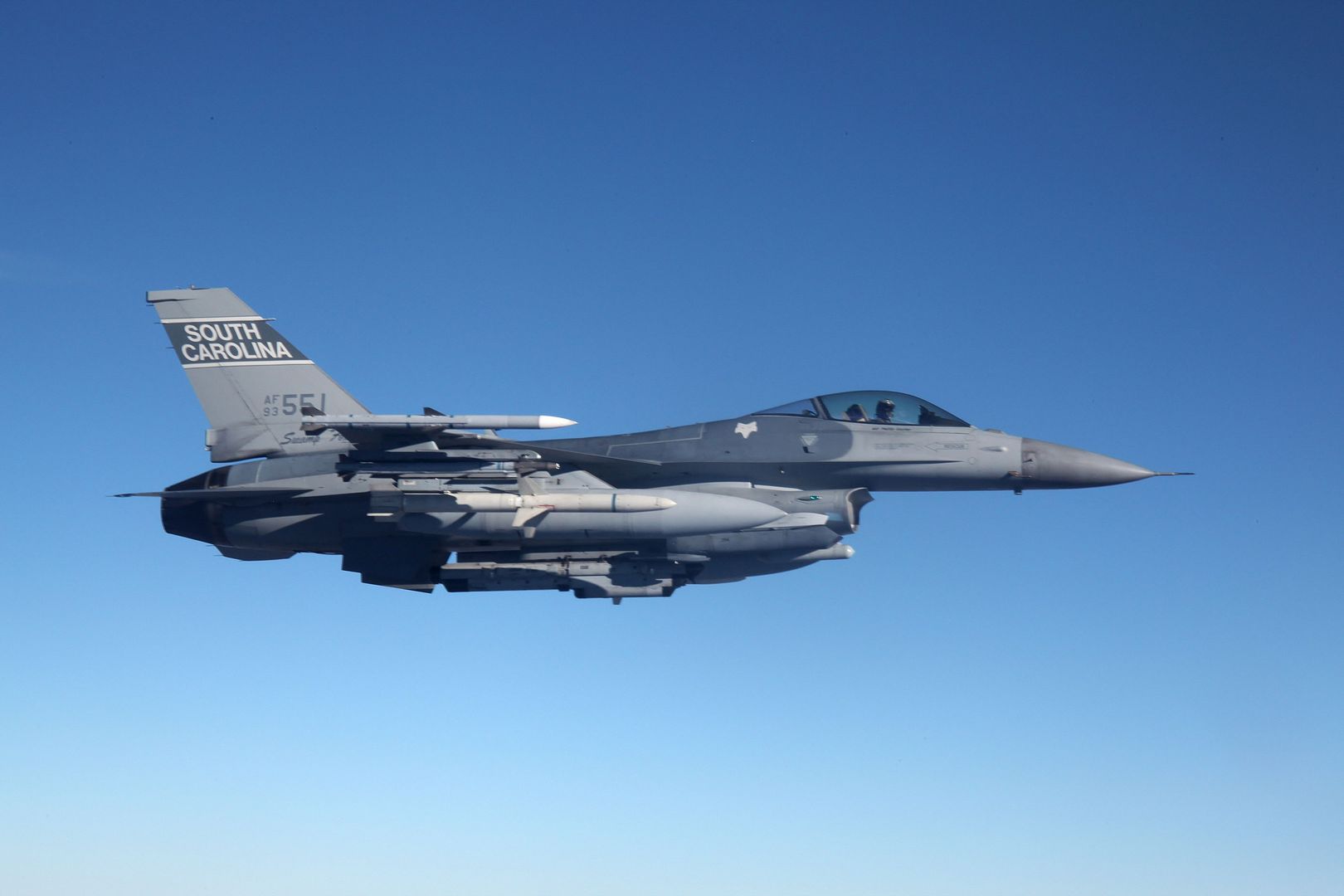
ATLANTIC OCEAN (Jan. 30, 2016) - An MH-60S Sea Hawk Helicopter assigned to the Tridents of Helicopter Sea Combat Squadron (HSC) 9 takes off from the flight deck of the aircraft carrier USS Dwight D. Eisenhower (CVN 69). Dwight D. Eisenhower is currently underway preparing for the upcoming Board of Inspection and Survey (INSURV) and conducting carrier qualifications. (U.S. Navy photo by Mass Communication Specialist 3rd Class Ryan U. Kledzik/Released)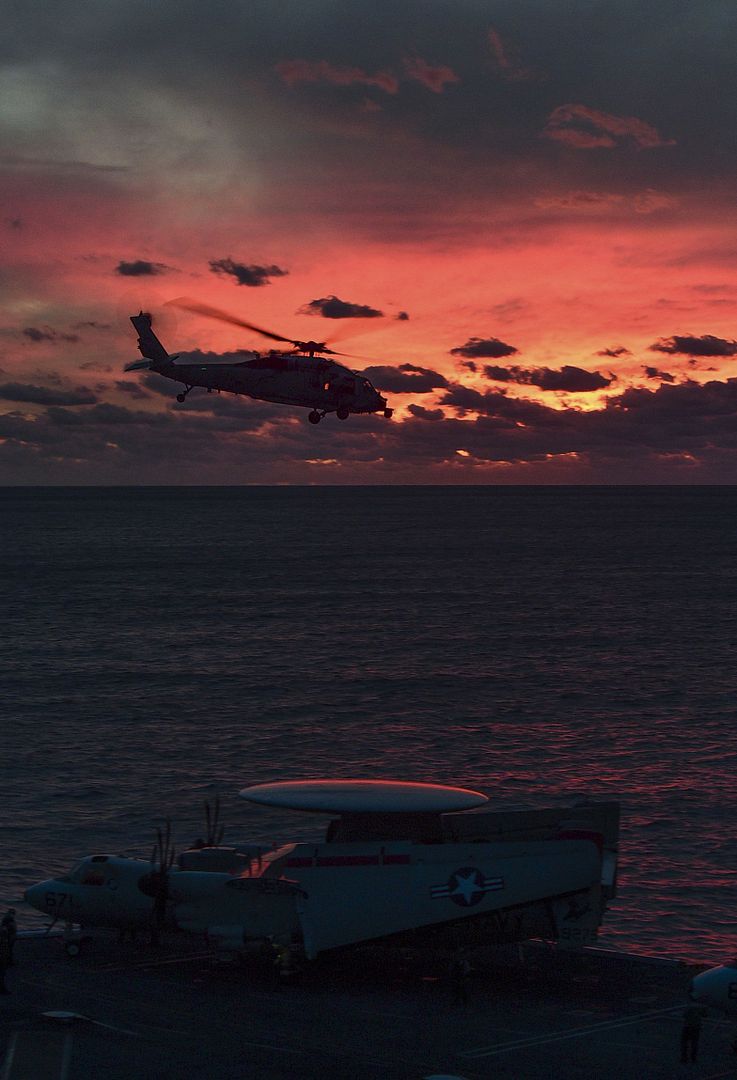
ATLANTIC OCEAN (Jan. 31, 2016) - A C-2A Greyhound assigned to the Rawhides of Fleet Logistics Support Squadron (VRC) 40 launches from the flight deck of the aircraft carrier USS Dwight D. Eisenhower (CVN 69). Dwight D. Eisenhower is currently underway preparing for the upcoming Board of Inspection and Survey (INSURV) and conducting carrier qualifications. (U.S. Navy photo by Mass Communication Specialist 3rd Class Anderson W. Branch/Released)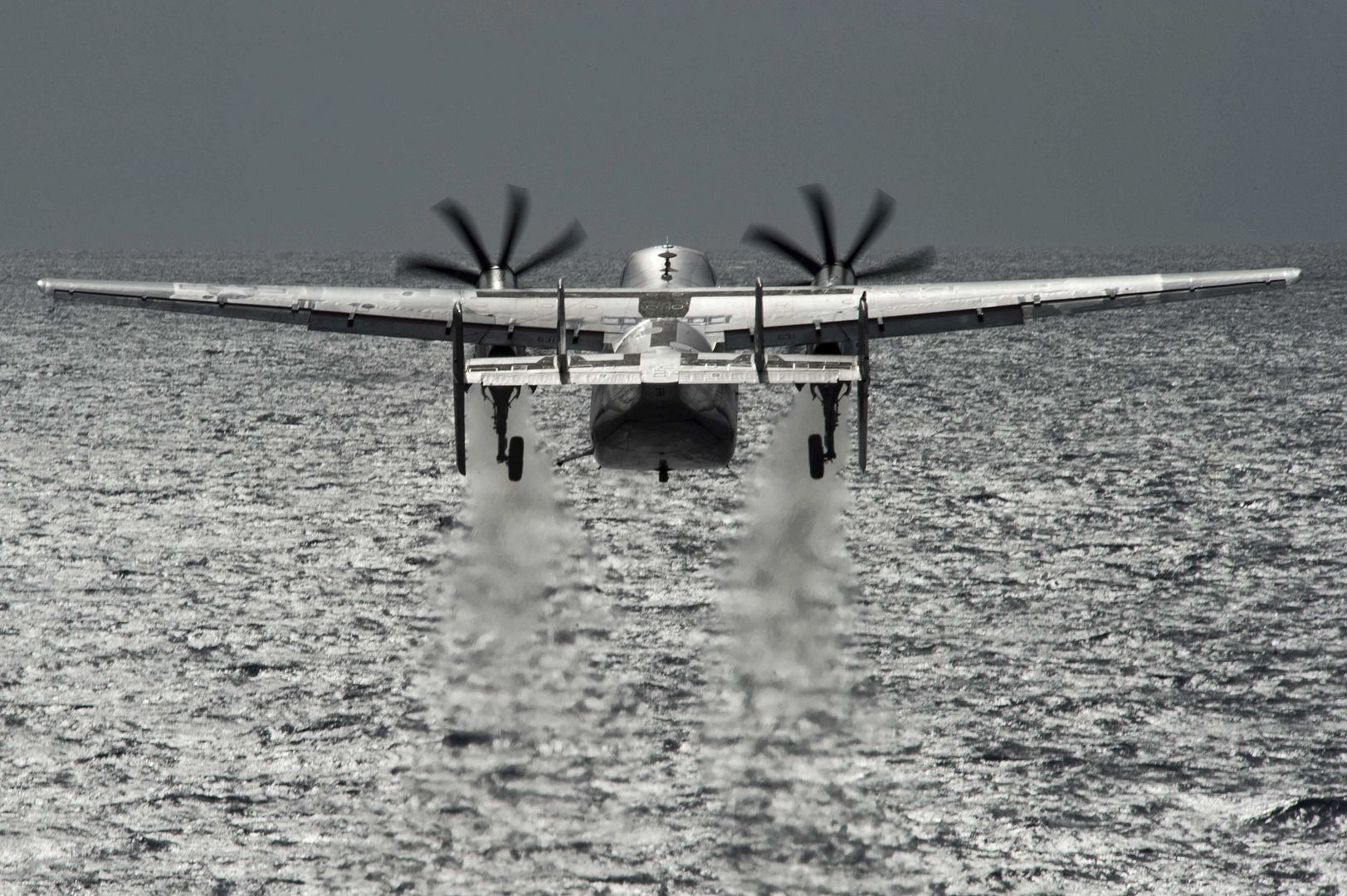
-
 Main AdminU.S. Air Force pilots from the 480th Expeditionary Fighter Squadron taxi F-16 Fighting Falcon fighter aircraft during a flying training deployment on the flightline at Souda Bay, Greece, Jan. 28, 2016. This training represents the fourth of its kind between the U.S. and Greek air forces since January 2014. (U.S. Air Force photo by Staff Sgt. Christopher Ruano/Released)
Main AdminU.S. Air Force pilots from the 480th Expeditionary Fighter Squadron taxi F-16 Fighting Falcon fighter aircraft during a flying training deployment on the flightline at Souda Bay, Greece, Jan. 28, 2016. This training represents the fourth of its kind between the U.S. and Greek air forces since January 2014. (U.S. Air Force photo by Staff Sgt. Christopher Ruano/Released)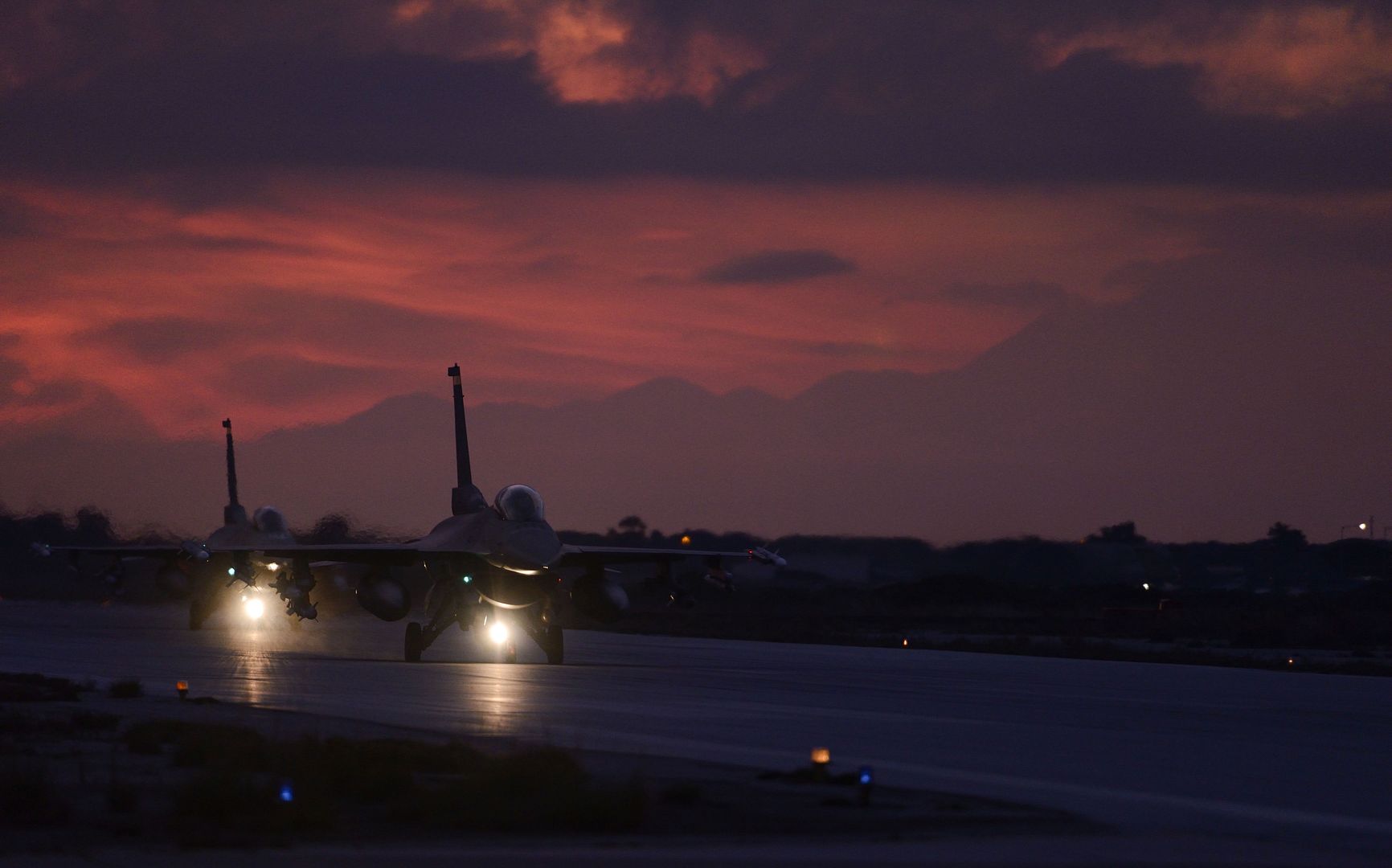
An F-16 Fighting Falcon from the 421st Expeditionary Fighter Squadron launches for a combat sortie Bagram Air Field, Afghanistan Feb. 1, 2016. The 421st EFS, based out of Bagram Air Field, Afghanistan, is the only dedicated fighter squadron in the country and continuously supports Operation Freedom?s Sentinel and the NATO Resolute Support mission. (U.S. Air Force photo by Tech. Sgt. Nicholas Rau)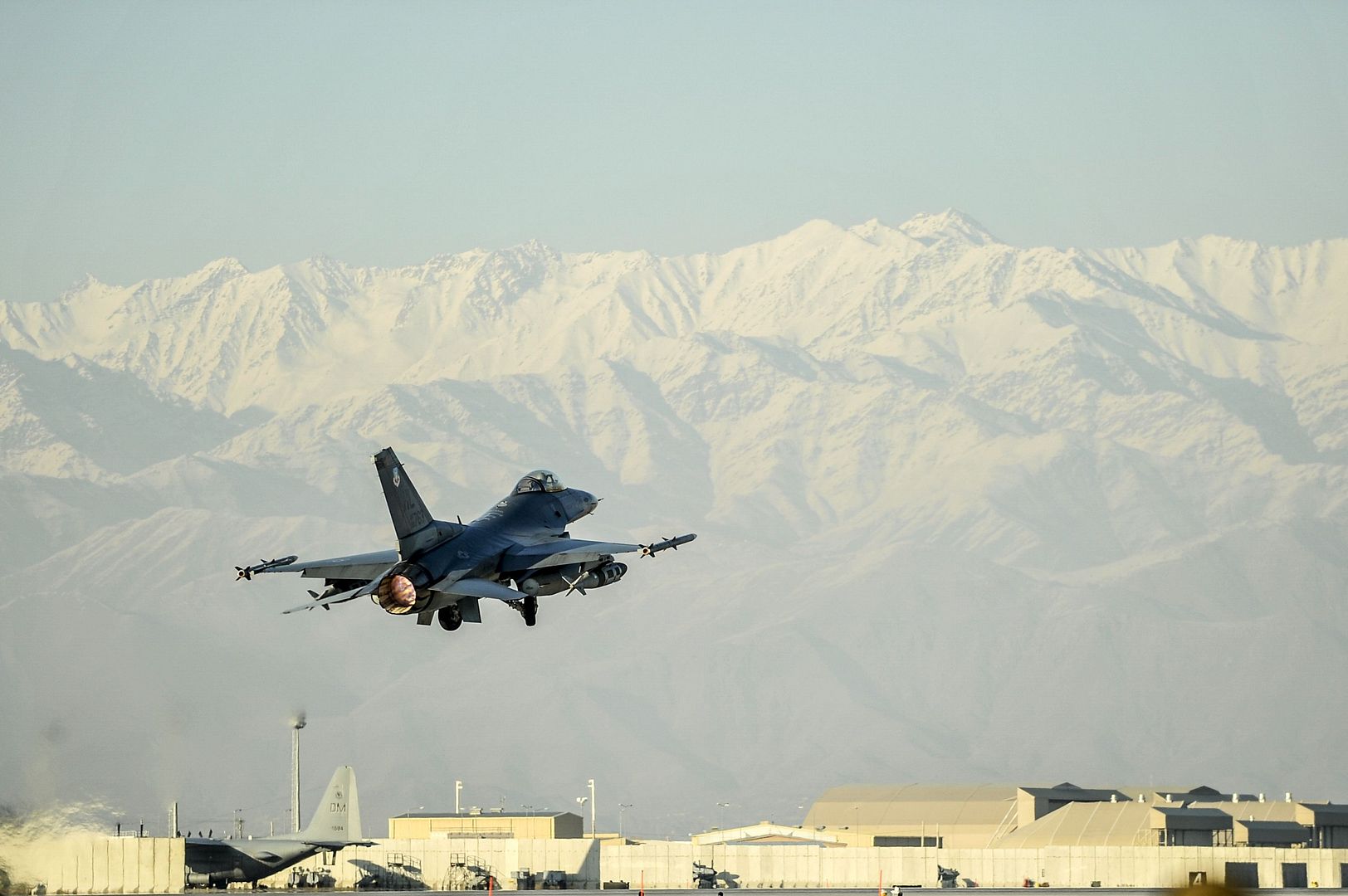
-
 Main AdminEVERETT, Wash., Feb. 2, 2016 /PRNewswire/ -- Boeing [NYSE:BA] and Saudia, Saudi Arabia's national airline, today celebrated the triple delivery of two Boeing 787-9 Dreamliners and a 777-300ER (Extended Range). A third Dreamliner will be delivered to Saudia within the next week. The airline ordered eight 787-9s in 2010.
Main AdminEVERETT, Wash., Feb. 2, 2016 /PRNewswire/ -- Boeing [NYSE:BA] and Saudia, Saudi Arabia's national airline, today celebrated the triple delivery of two Boeing 787-9 Dreamliners and a 777-300ER (Extended Range). A third Dreamliner will be delivered to Saudia within the next week. The airline ordered eight 787-9s in 2010.
Saudia is no stranger to such large deliveries. In December 1999, Boeing delivered three 777s to Saudia.
"The delivery of our first Dreamliners marks yet another exciting chapter in Saudia's long-standing relationship with Boeing that began in the early 1960s," said His Excellency Eng. Saleh bin Nasser al-Jasser, Director-General, Saudi Arabian Airlines. "With its reputation for reliability, operational efficiency and comfort, we now look forward to the 787 becoming an integral addition to Saudia's fleet as we continue our fleet modernization and expansion as part of our transformation plans."
The airline will now have 48 Boeing airplanes in its fleet that currently include 777-200ERs, 777-300ERs and 747-400s. Over the last 55 years, Saudia has taken delivery of over 130 Boeing airplanes including 707s, 737s, MD-11Fs, DC-9s and MD90s.
"This delivery to Saudia is an outstanding moment in a partnership that has grown phenomenally over the last several decades," said Boeing Commercial Airplanes President and CEO Ray Conner. "Today, we are proud not only to have Saudia join our growing base of 787 customers in the Middle East, but also at the airline's continued confidence in Boeing's technology and airplanes over the years."
The Boeing 787 Dreamliner is an all-new, super-efficient family of commercial airplanes that brings big-jet ranges and speed to the middle of the market. In response to airlines' overwhelming preference, Boeing designed the 787 family with superior efficiency, which allows airlines to profitably open new routes to fly people directly where they'd like to go in exceptional comfort.
Since entering service in 2011, the 787 family is flying more than 350 routes and has established more than 75 new nonstop routes around the world.
More than 60 customers - including Saudia - from around the world have placed orders for more than 1,000 airplanes, making the 787 Dreamliner the fastest selling twin-aisle airplane in Boeing history.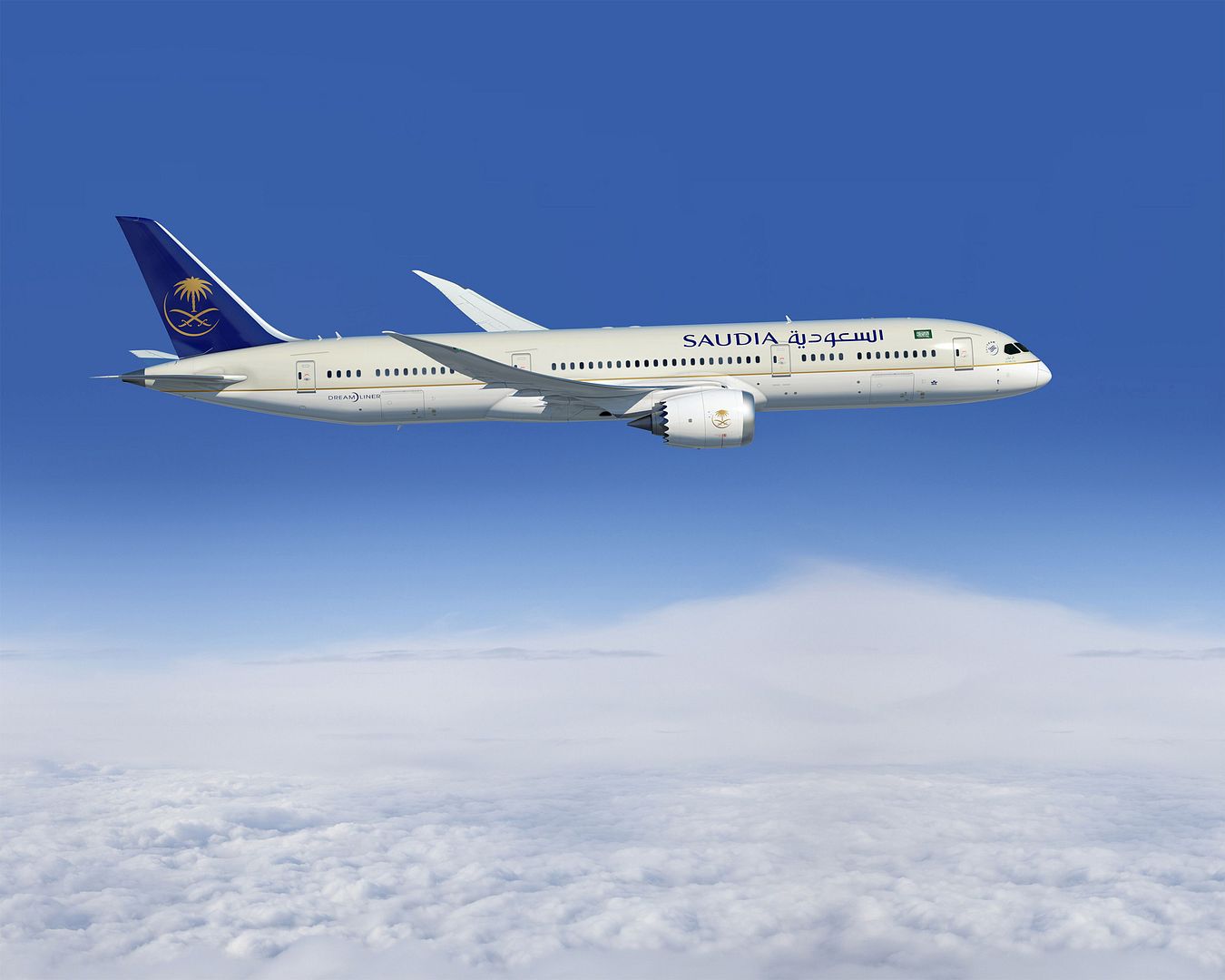
3 February 2016 Press Release
The first A350-900 for Singapore Airlines yesterday completed its maiden flight over the skies of South West France. The aircraft, featuring the airline?s iconic livery, will now enter the final phase of production, including further ground checks and test flights, before being prepared for delivery in the coming weeks.
The all-new A350 XWB will form the backbone of Singapore Airlines? future mid-size widebody fleet. Altogether the airline has ordered 67 A350-900s which will be operated on long range flights, as well as on selected regional services. Seven of the aircraft will be delivered with an ultra-long range capability for flights of up to 19 hours, allowing the carrier to resume non-stop flights to the US.
The A350 XWB is the world?s latest generation airliner and the newest member of Airbus? modern, comfortable & efficient widebody product family. It features the latest aerodynamic design, carbon fiber fuselage and wings, plus new fuel-efficient Rolls-Royce Trent XWB engines. Together, these latest technologies translate into unrivalled levels of operational efficiency, with a 25 per cent reduction in fuel burn and emissions, and significantly lower maintenance costs.
To date, Airbus has recorded a total of 777 firm orders for the A350 XWB from 41 customers worldwide, already making it one of the most successful widebody aircraft ever.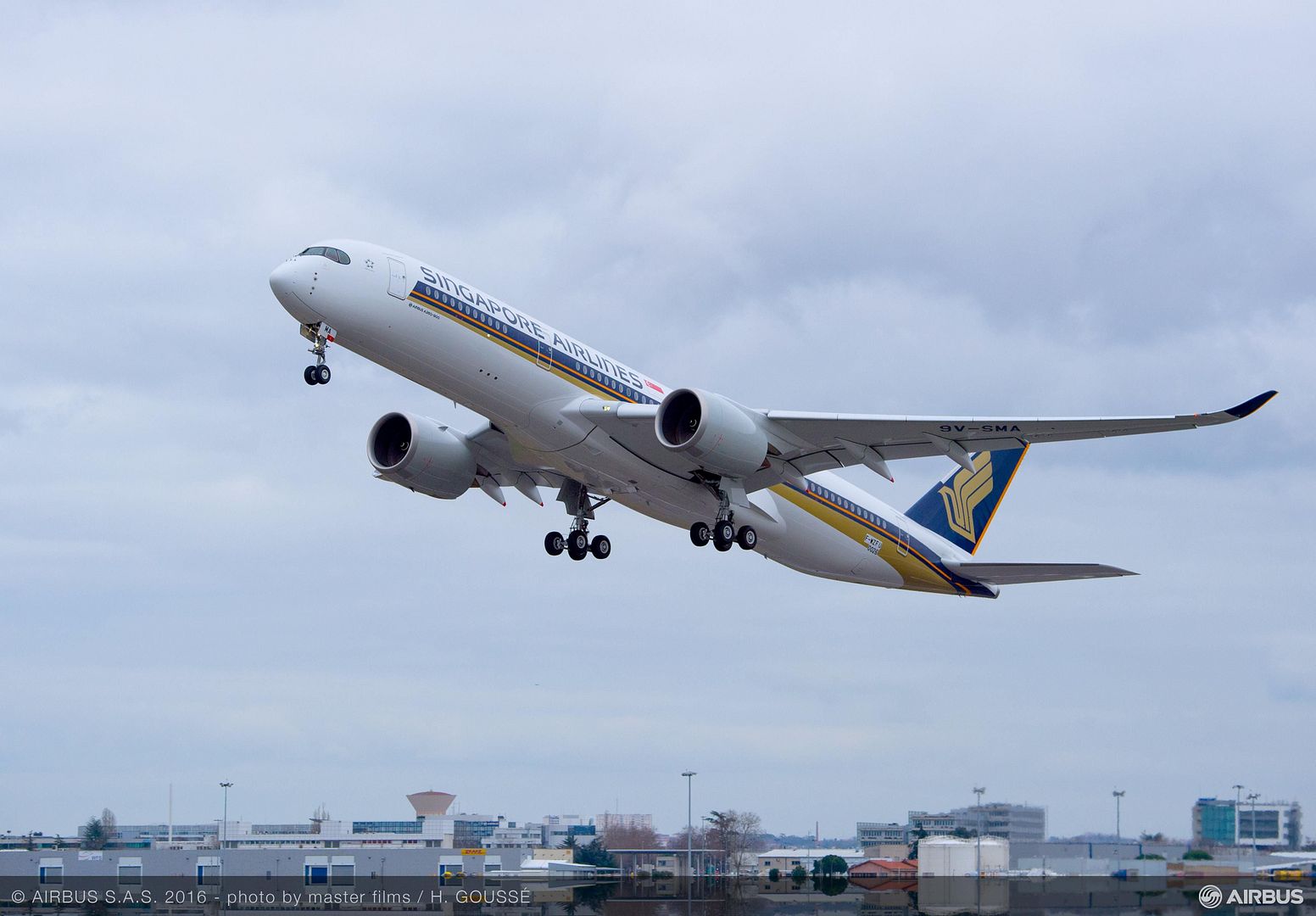
-
 Main AdminThe restoration of Airspeed Oxford/Consul PK286/G-AIKR has been completed at Wigram, Christchurch, NZ
Main AdminThe restoration of Airspeed Oxford/Consul PK286/G-AIKR has been completed at Wigram, Christchurch, NZ
Link - https://www.facebook.com/AirForceMuseumofNewZealand/photos/pcb.10153418775531279/10153418772606279/?type=3&theater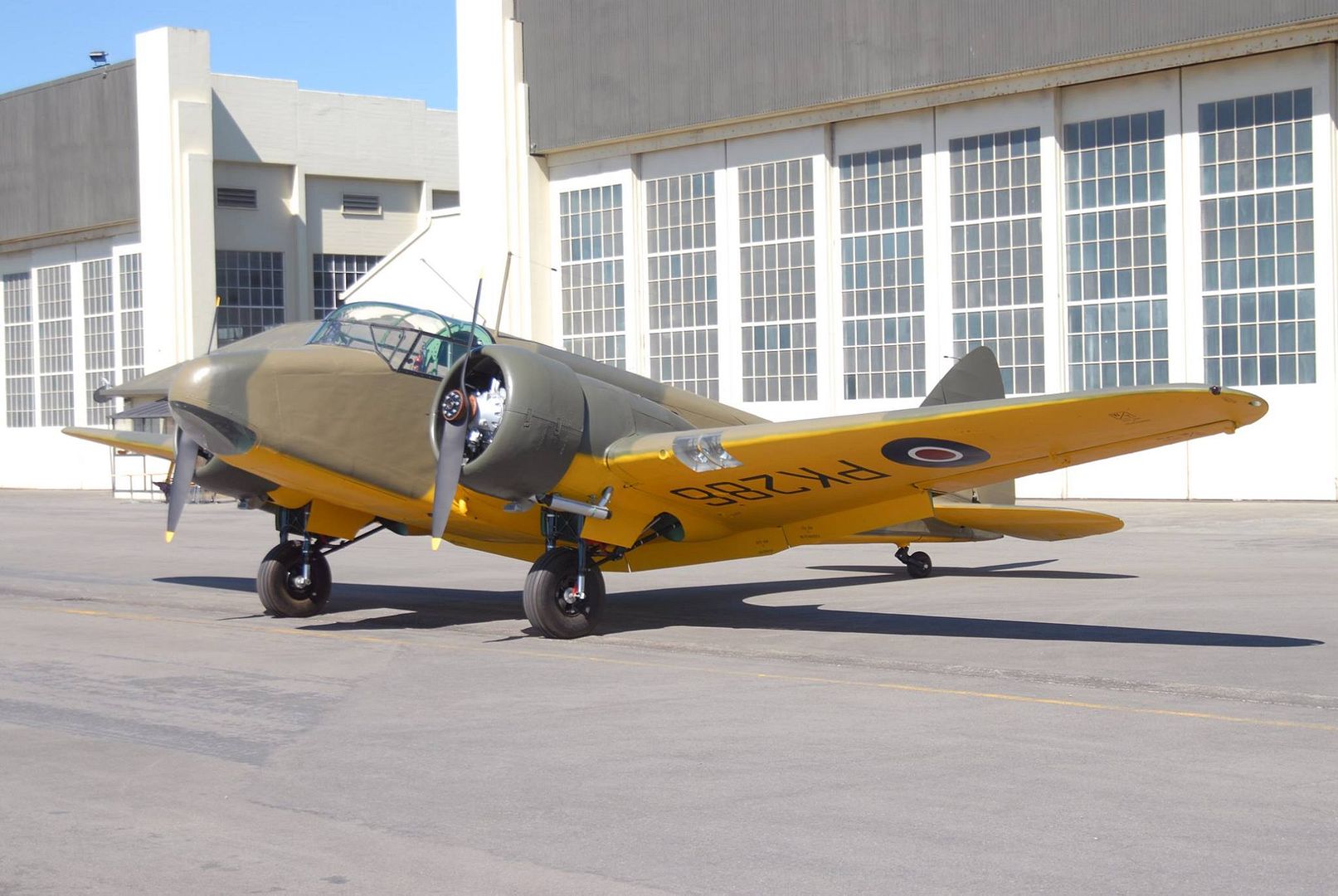
New and Improved Orion Crew Module Arrives at Kennedy Space Center
The Lockheed Martin (NYSE: LMT) and NASA Orion team has secured the 2,700 lb. Exploration Mission-1 (EM-1) Orion crew module into its structural assembly tool, also known as the ?birdcage.? The crew module is the living quarters for astronauts and the backbone for many of Orion?s systems such as propulsion, avionics and parachutes.
?The structure shown here is 500 pounds lighter than its Exploration Flight Test-1 (EFT-1) counterpart,? said Mike Hawes, Lockheed Martin Orion vice president and program manager. ?Once the final structural components such as longerons, bolts and brackets are added, total crew module structural weight savings from EFT-1 to EM-1 will total 700 pounds.?
From experience gained by building test articles, building and flying EFT-1, and now building the EM-1 crew module, the Lockheed Martin team is learning how to shed weight, reduce costs and simplify the manufacturing process ? all in an effort to improve the production time and cost of future Orions.
?Our very talented team in Louisiana has manufactured a great product and now they have passed the baton to Florida,? said Hawes. ?This is where we assemble, test and launch, and the fun really begins.?
At Kennedy Space Center, the crew module will undergo several tests to ensure the structure is perfectly sound before being integrated with other elements of the spacecraft. First it will undergo proof-pressure testing where the structural welds are stress tested to confirm it can withstand the environments it will experience in space. The team will then use phased array technology to inspect the welds to make sure there are no defects. Additional structural tests will follow including proof-pressure testing of the fluid system welds and subsequent x-ray inspections.
Once the crew module passes those tests it will undergo final assembly, integration and entire vehicle testing in order to prepare for EM-1, when Orion is launched atop NASA?s Space Launch System (SLS) for the first time. The test flight will send Orion into lunar distant retrograde orbit ? a wide orbit around the moon that is farther from Earth than any human-rated spacecraft has ever traveled. The mission will last about three weeks and will certify the design and safety of Orion and SLS for future human-rated exploration missions.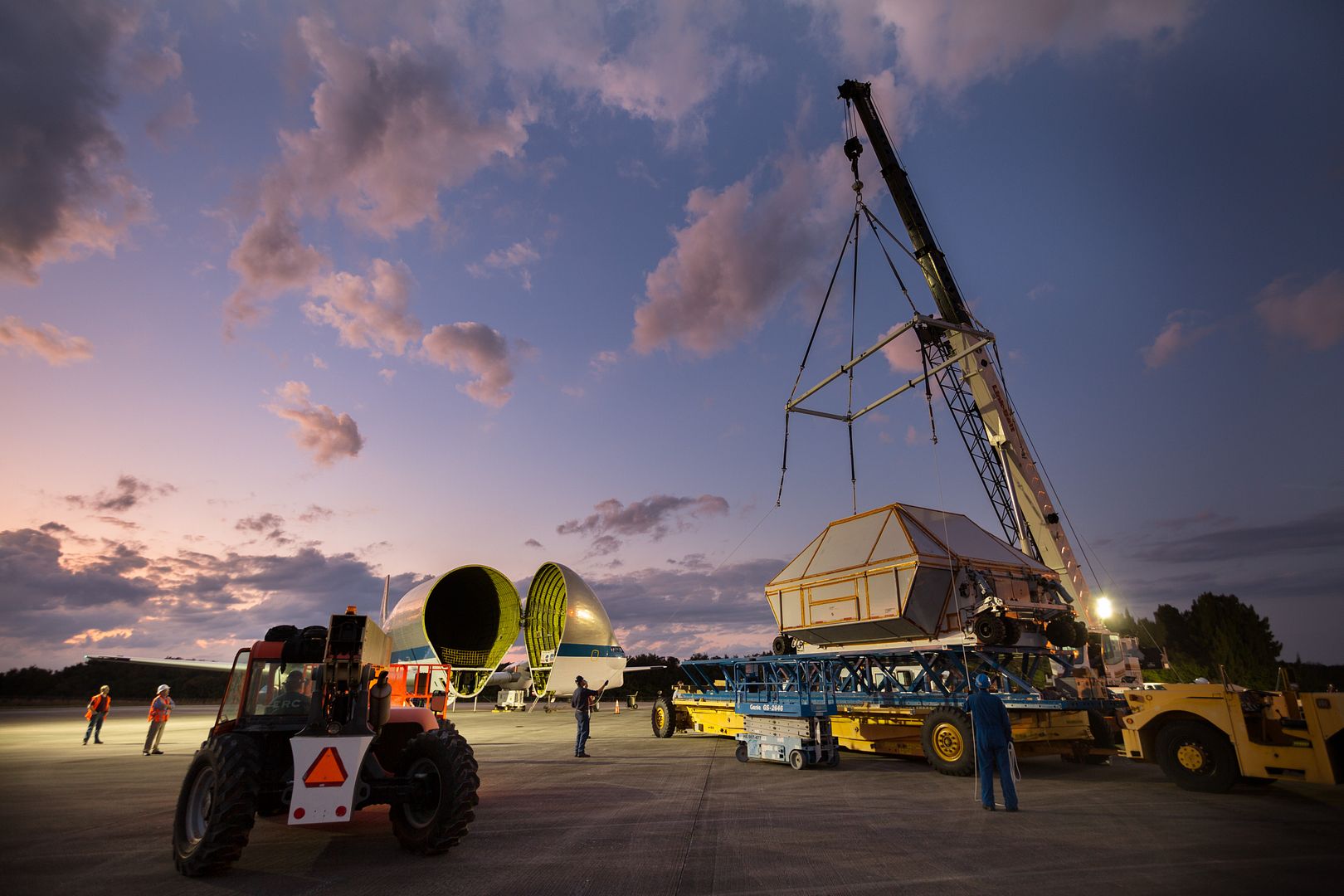
ST. LOUIS, Feb. 3, 2016 ? The Royal Australian Air Force (RAAF) has selected Boeing [NYSE: BA] to provide the service with P-8 maintenance training devices. This is the first international sale of P-8 maintenance training equipment currently used by the U.S. Navy for its P-8A Poseidon fleet.
The RAAF virtual trainers were purchased through the U.S. Navy and RAAF Cooperative Program and will be used to train P-8A maintenance personnel starting in early 2018.
?This provides the RAAF with the ability to train its maintainers on more than 1,400 maintenance procedures using the Boeing provided suite of devices,? said Tom Wagner, Boeing?s P-8 maintenance program manager. ?RAAF maintainers will be able to practice at great length before they are required to perform maintenance on the actual P-8A aircraft.?
The maintenance training devices provide interactive, high-fidelity simulations based on actual mission systems software while the hardware-based trainers are full-scale replicas of aircraft components.
Earlier this year, the RAAF ordered a Boeing P-8 aircrew training system for training pilots and mission crews to operate the aircraft, its sensors, communications and weapons systems.
In February 2014 the Australian government approved the acquisition of eight P-8A aircraft with an option for four more. That contract included training and initial spares and support equipment. Boeing plans to begin delivering the aircraft in late 2016 and the P-8A training system in 2018.
Boeing Aerostructures Australia manufactures ailerons for 737 series aircraft and their derivatives, including the P-8.
-
 Main AdminLUKE AIR FORCE BASE, Ariz. (AFNS) -- A 61st Fighter Squadron pilot made history Feb. 2 as the first Luke Air Force Base pilot to achieve 500 flight hours in an F-35 Lightning II.
Main AdminLUKE AIR FORCE BASE, Ariz. (AFNS) -- A 61st Fighter Squadron pilot made history Feb. 2 as the first Luke Air Force Base pilot to achieve 500 flight hours in an F-35 Lightning II.
Lt. Col. Matthew Hayden, also the 56th Fighter Wing chief of safety, achieved this milestone flying his 270th sortie, a routine training mission.
?This is a testament to Luke and all the work we?ve done here to build up our experience and operations,? Hayden said. ?This is a reflection of our efforts to set up a high-quality training program for new pilots.?
Hayden is one of the most experienced F-35 pilots in the world, and has flown and instructed new pilots at Luke AFB since the inception of its program.
?The (61st FS) Top Dogs are incredibly lucky to have an F-35 instructor pilot who has been with the program since the beginning flying with us on a daily basis,? said Lt. Col. Aaron Jelinek, the 61st FS director of operations. ?Lt. Col. Hayden's depth of knowledge when it comes to both F-35 systems and tactics add incredible value to squadron operations each and every day.?
As Luke AFB transitions from its mission of training F-16 Fighting Falcon pilots, maintainers and support specialists to training equivalent Airmen in operation of the new F-35 platform, Hayden?s 500th hour in the air marks a significant leap of progress in the development of the base?s F-35 program.
?When our most experienced instructor pilot only has 500 hours in the plane, it goes to show the F-35 program is still young,? Jelinek said. ?However, it also shows that we are reaching a point where operations are normalizing, and we are able to transition our syllabus from training initial cadre to training less experienced fighter pilots.?
Luke Airmen are among the first in a global generation of pilots to fly the F-35, and will continue to reach milestones such as this for the duration of the aircraft?s development.
?The fabulous thing about this is that there are a lot of guys who are right behind me, who are really close to getting the same kind of milestone in their flying experience,? Hayden said.
As today?s pilots become more experienced with the F-35 platform, they position themselves to become the instructors and mentors of future generations of pilots flying more advanced versions of the fighter jet as they are developed and produced.
?As we build our cadre of instructors here, they?ll be able to look back at their experience flying the airplane and have credibility and a solid background that they can use to teach their students,? Hayden said.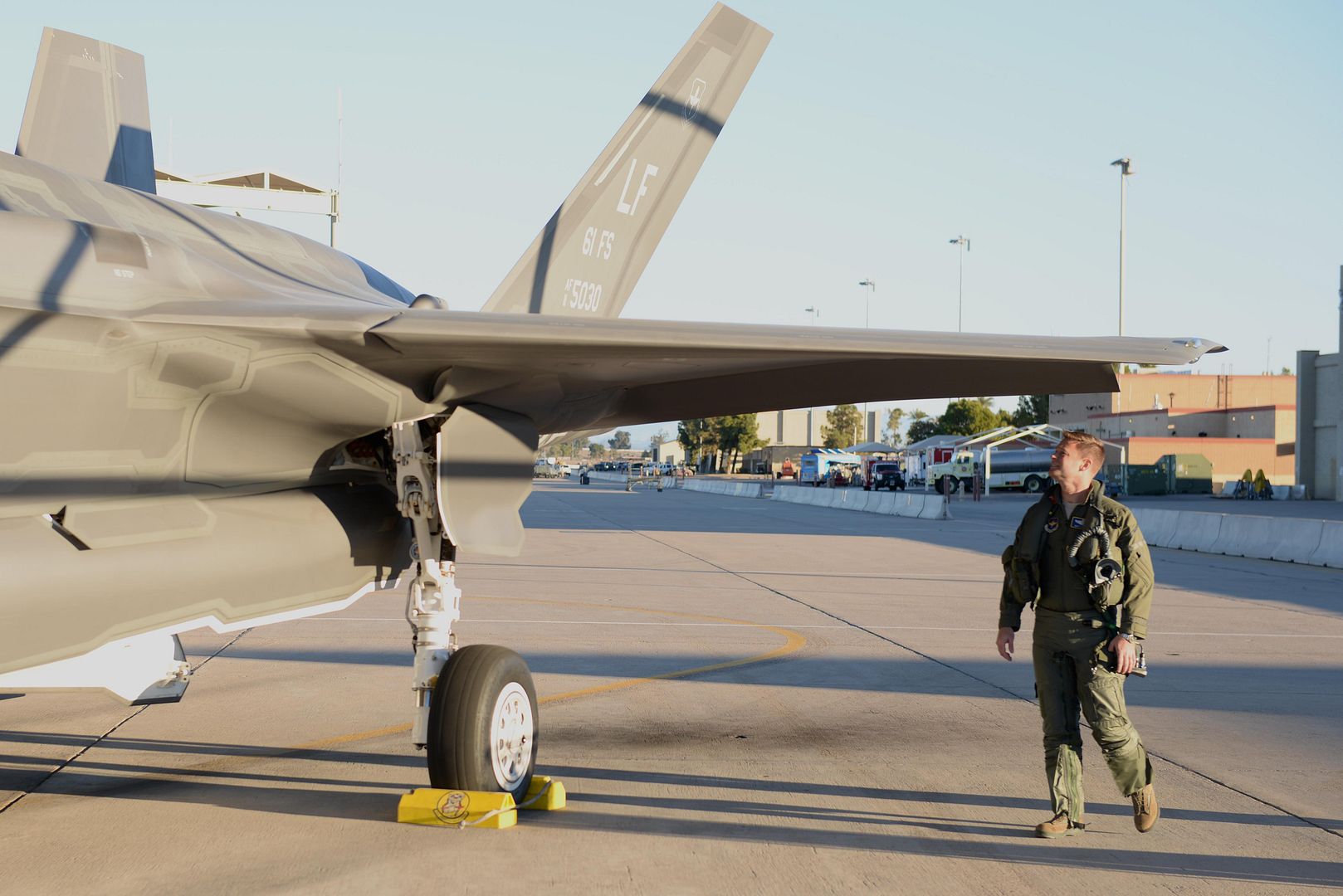
ATLANTIC OCEAN (Feb. 4, 2016) ? A T-45C Goshawk assigned to Carrier Training Wing (CTW) 2 lands on the flight deck of the aircraft carrier USS Dwight D. Eisenhower (CVN 69). Dwight D. Eisenhower is currently underway preparing for the upcoming Board of Inspection and Survey (INSURV) and conducting carrier qualifications. (U.S. Navy photo by Mass Communication Specialist 3rd Class Jameson E. Lynch/Released)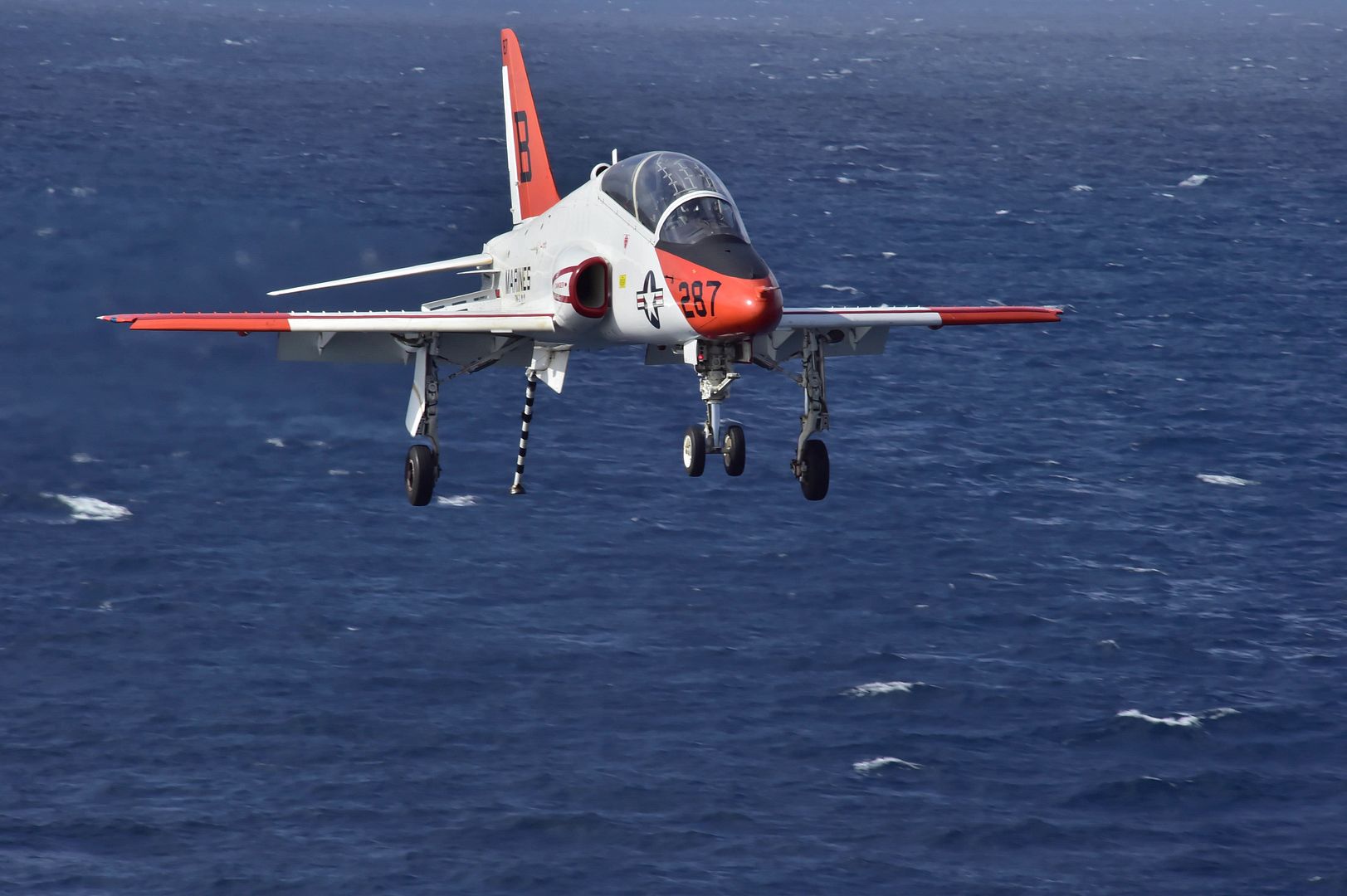
An F-16 Fighting Falcon from the 480th Expeditionary Fighter Squadron takes off from the flightline at Souda Bay, Greece, Feb. 1, 2016, during a flying training deployment. The training included more than 15 aircraft launches a day as part of the training between the U.S. and Hellenic air forces. (U.S. Air Force photo/Staff Sgt. Christopher Ruano)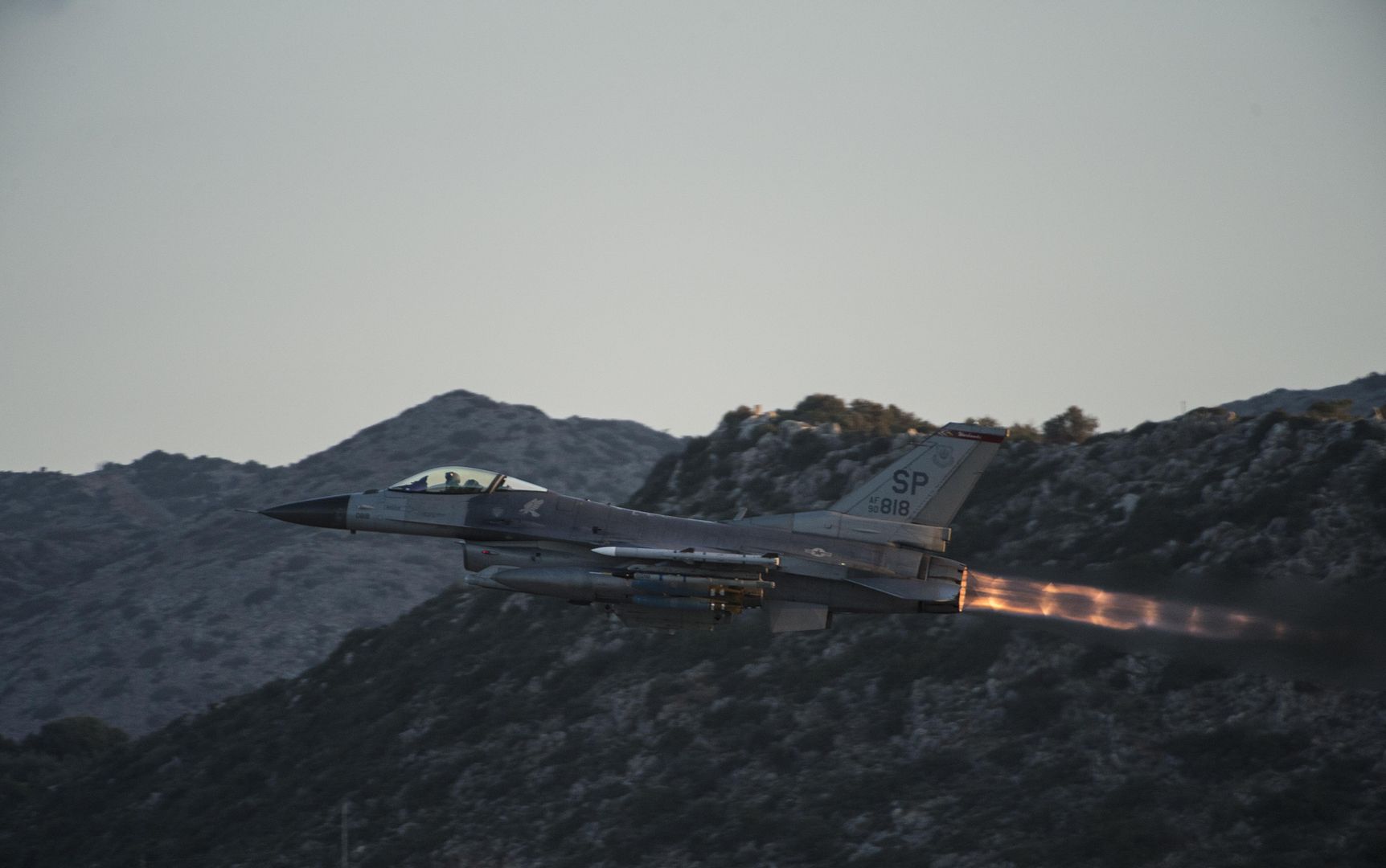
04 February, 2016 BY: James Drew Washington DC
The US Air Force has not only ditched long-standing plans to retire the hardy Fairchild Republic A-10 attack airplane but is launching a follow-on wing replacement programme to keep the combat veteran flying well into the next decade.
On Tuesday, defence secretary Ashton Carter announced plans to keep the ?Warthog? that first flew in 1972 for another five years, with a revised retirement date of 2021.
The same day, the air force released a draft statement of work regarding construction of slightly updated versions of the A-10 enhanced wing assembly currently built by Boeing and Korean Aerospace Industries. Boeing?s contract includes 173 wings with options for 69 more, but the air force confirms that ordering period ends in September. Boeing has said those wings, based on 3D models of the original thick-skin wing design of the 1970s, could keep the aircraft flying past 2040.
?This will not be a sole-source acquisition to Boeing, but Boeing will have every opportunity as will other approved sources of supply to compete in the source selection process for the A-10 TUSK wing requirement,? says a spokesman for the programme. Approved sources include Boeing, Lockheed Martin, Israel Aerospace Industries and Spirit AeroSystems and representatives from each company attended an industry day at Hill AFB in November.
According to contracting notices, the A-10 thick-skin urgent spares kitting (TUSK) wing assemblies programme could deliver up to 120 complete wings at a rate of 10 to 25 units per year over a five-year contract period. The air force?s fiscal year 2016 budget includes funding for the first wing and three low-rate initial production units.
?Wing assembly will include all structures, fairings, flight controls, systems, electrical harnesses, and hardware that makes up a complete wing from tip to tip,? the statement of work explains. ?Excluded will be weapons mounting pylons, landing gear, countermeasure and classified systems.?
The first and subsequent wing assemblies are to be installed on operational A-10Cs and will remain there once certified, the document adds. The air force maintains 284 operational A-10C with an average fleet age of 34 years and 77% mission-capable rate, air force data shows.
Though the air force has been trying to retire the A-10 since 2014 to generate savings, supporters within the organisation and in Congress have successfully lobbied against the move. Lockheed Martin?s F-35 and other fast jets were meant to assume the Thunderbolt II?s close air support role.
Introduced in 1977, the A-10 has become an invaluable tool for hunting Islamic State militants in Iraq and Syria and it frequently teams with AC-130 gunships to rain down destruction on oil trucks, tanks, utility vehicles and other insurgent-held equipment. Carter claims the aircraft?s success in ongoing counter-insurgency operations is what saved it from the boneyard.
-
 Main AdminROBINS AIR FORCE BASE, Ga. (AFNS) -- There will be Panthers and Broncos at this year?s Super Bowl -- but Eagles?
Main AdminROBINS AIR FORCE BASE, Ga. (AFNS) -- There will be Panthers and Broncos at this year?s Super Bowl -- but Eagles?
Thanks, in part, to work done at Robins Air Force Base, the answer is a resounding yes. The teams won't be the only ones commanding a presence Feb. 7 during one of the country's most anticipated annual sporting events. So, if you're lucky enough to score tickets, you'll be in very good company.
The skies above Levi's Stadium, home of the San Francisco 49ers, in Santa Clara, California, will be a well-protected fortress, defended by one of the most feared weapon systems in the Defense Department's inventory.
F-15 Eagles, from the California Air National Guard, have been training in the weeks leading up to the big game, along with Cessnas from the Civil Air Patrol. That training includes practicing interception techniques should they ever have to locate and guide wandering aircraft who have flown into restricted airspaces, such as those imposed for the Super Bowl.
Those F-15s, by the way, are the same aircraft maintained by the 561st Aircraft Maintenance Squadron at the Warner Robins Air Logistics Complex.
At some point in an F-15's service life, it will have been touched by someone from Robins AFB. The aircraft's worldwide reach is possible due to the contributions from hundreds of people at this base.
There are folks in the fabric survival equipment shop who inspect and pack parachutes. If you're coming out of an airplane at 20,000 feet, it's critical those chutes open in time. Each parachute has a service life of 13 years.
Then there are those in the 572nd Commodities Maintenance Squadron, who work on the aircraft's wings. Workers de-panel the wings, tear it down, remove plumbing and foam, then hydroblast sealant and debris. It's inspected and repairs are made as needed before build-up. Mechanics here also work on the aircraft's protective canopies that cover its cockpit and enclose the aircrew.
High-quality visibility is paramount in an F-15, especially when flying in air-to-air combat environments. When an F-15 leaves Robins AFB, it does so with a brand new piece of protective glass. There are the program managers in the system program office who plan the work performed on the F-15 fleet; and foreign military sales professionals who engage with international partners who purchase these high-value assets.
The rewire flight maintainers remove and replace every single piece of wire inside the fighter aircraft's C and D models. That workload will soon end when the final aircraft is scheduled to leave the complex in late February.
The hundreds of engineers, schedulers, planners, sheet metal, and aircraft mechanics who come to work daily to perform programmed depot maintenance have also contributed to fiscal year 2015 numbers that exist due to continuous process improvements in the 561st AMXS. That resulted in the delivery of 73 Eagles back to the warfighter in the last fiscal year.
It takes a true team effort to keep these aircraft flying, not only overseas engaging with enemy forces, but also here in the homeland protecting tens of thousands of citizens who want to enjoy a football game.
Things won't just be crazy on the ground, with metal detectors and bag checks, long lines, congestion in the streets, armed security guards and law enforcement personnel throughout the stadium and city, but the sky, too, will be off-limits. According to the Federal Aviation Administration, there will be temporary flight restrictions prohibiting certain aircraft operations within a 32-mile radius of the stadium on game day.
So what happens if you're a pilot and you decide to take a quick, casual detour to peek at gameday activities below? Or, maybe you're just out for a nice flight, got lost for a few minutes and are unaware of your surroundings?
Either way, probably within a matter of seconds, expect you'll be intercepted by a pair of F-15s. In the unlikely event that happens, there's an FAA guide explaining how to react, in case you haven't received training on interception procedures.
In the meantime, sit back, eat some snacks and enjoy a good, old fashioned American pastime -- knowing the skies are safe.
SAN DIEGO, Feb. 5, 2016 (GLOBE NEWSWIRE) -- The NASA Global Hawk will conduct several missions to collect detailed data over the Pacific Ocean from complex El Ni?o weather patterns resulting from variations in ocean temperatures across the equator.
The Northrop Grumman Corporation-built (NYSE:NOC) NASA Global Hawk missions will take place from February to March as part of National Oceanic and Atmospheric Administration (NOAA)-led missions. The multi-year missions, called Sensing Hazards with Operational Unmanned Technology (SHOUT), will provide detailed meteorological measurements from a region in the Pacific that is known to be particularly critical for interactions linked to West Coast storms and rainfall.
"With the ability to fly at 65,000 feet for 30 hours, the NASA Global Hawk allows us to study intense and remote weather conditions that were previously unreachable," said Dave Aguinaldo, program manager, NASA Global Hawk, Northrop Grumman.
The NASA Global Hawk is one of several assets being used by scientists from NASA and NOAA to advance understanding and predictions of tropical storms, winter storms and major floods. The unmanned high-altitude, long-endurance NASA Global Hawk aircraft will work alongside air, land and sea platforms to gather data. Scientists will use this information to better understand El Ni?o's impacts on the U.S. and to improve NOAA's observational systems, models and predictions.
NASA and Northrop Grumman are partnered under the Space Act Agreement, which allows for shared use of the NASA Global Hawk system to conduct scientific experiments and explore new mission capabilities. Previous NASA Global Hawk missions have included hurricane research, examining the effects of greenhouse gasses and conducting cutting-edge autonomous aerial refueling trials.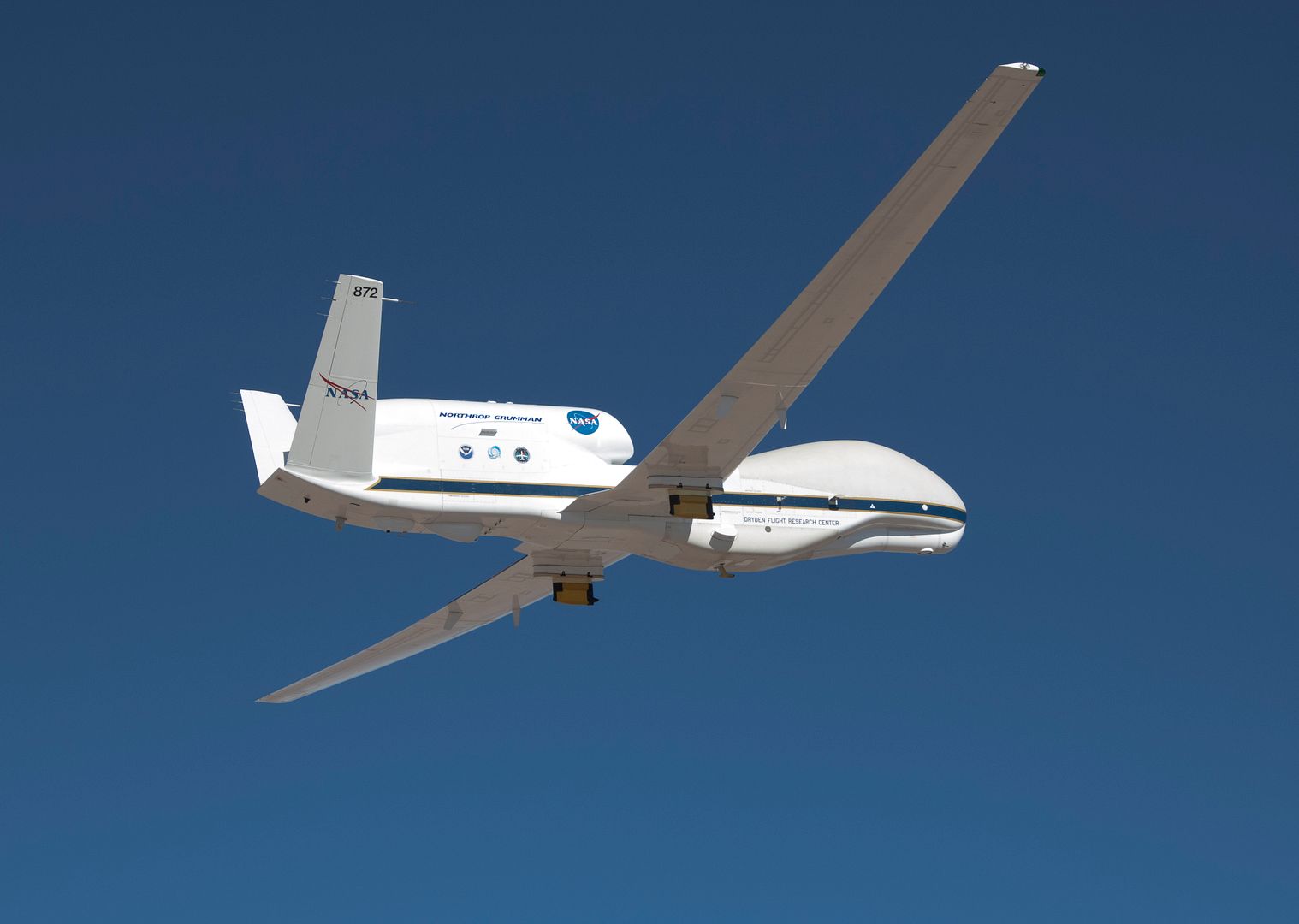
CAPE CANAVERAL AIR FORCE STATION, Fla., Feb. 5, 2016 ? Boeing [NYSE: BA] and the U.S. Air Force today completed the GPS IIF constellation with the launch of the 12th Boeing-built satellite.
Following on-orbit tests, GPS IIF-12 will be formally declared operational in approximately one month, making it the 50th GPS satellite Boeing will have delivered on orbit to the Air Force.
Since the first launch on May 27, 2010, the GPS IIFs have advanced the Air Force?s Global Positioning System modernization program by improving accuracy and security while introducing new civilian and military capabilities to a system used by millions of people around the world.
?This GPS IIF milestone builds on our 40-plus years of GPS experience and a strong government-Boeing partnership,? said Dan Hart, vice president, Boeing Government Satellite Systems. ?We continue investing in GPS innovation while driving down costs, keeping GPS prepared to meet current and future demands.?
Boeing has been the prime contractor for GPS since the program?s inception, providing multiple generations of satellites that have collectively accrued more than 540 years of on-orbit operation.
GPS IIF-12 lifted off from Cape Canaveral Air Force Station aboard a United Launch Alliance Atlas V launch vehicle at 8:38 a.m. EST. About three hours and 23 minutes later the spacecraft was released into its medium Earth orbit of about 12,000 miles. Signal acquisition was confirmed at 12:09 p.m. EST.
Boeing and its heritage companies have been advancing satellite technology for more than 50 years. Continuing investments in space are helping the company retain its industry leadership as it begins its second century in 2016.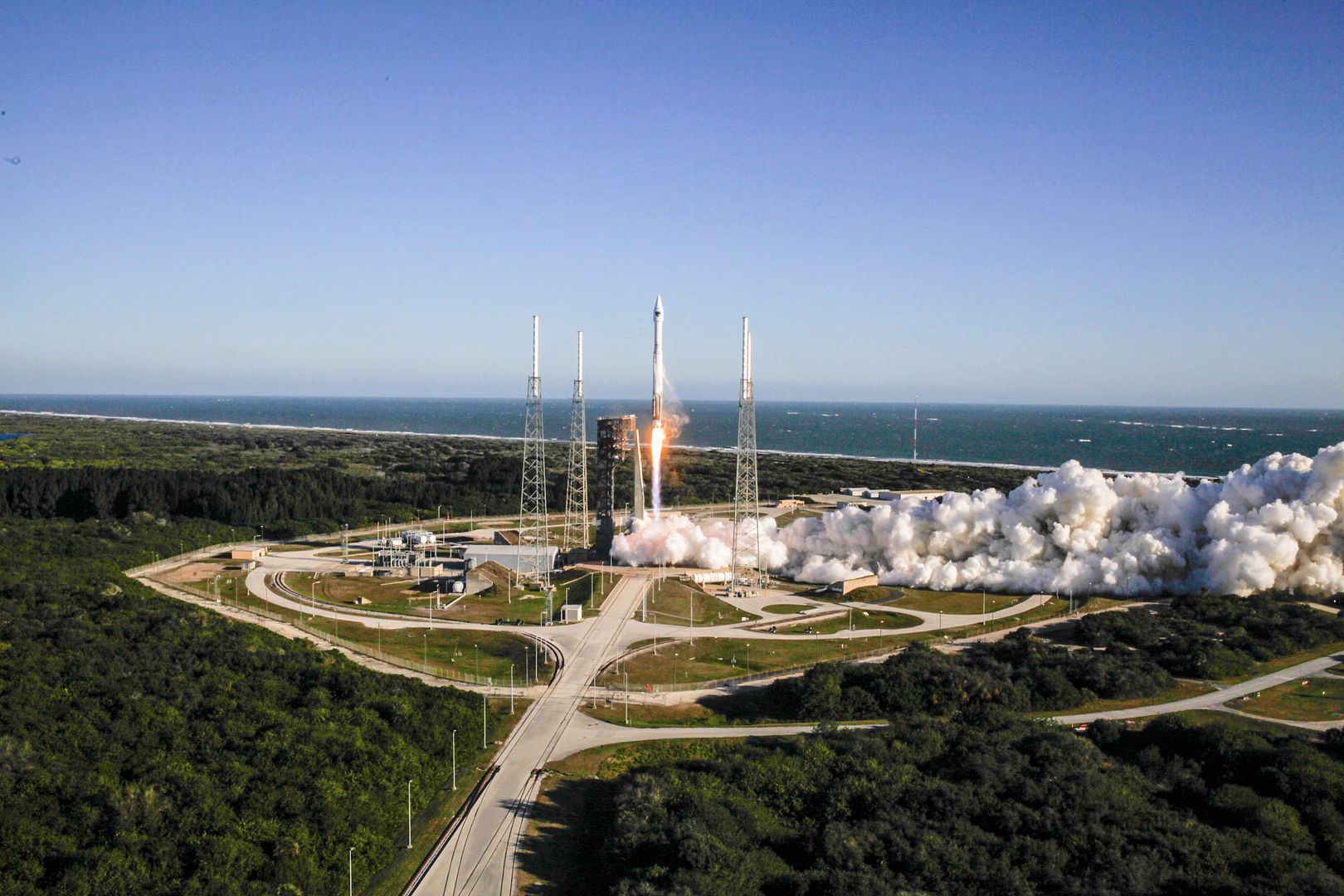
NAVAL AIR STATION PATUXENT RIVER, Md. ? An Italian Air Force F-35 completed the fighter jet?s first transatlantic crossing Friday, a historic event that kicks off a landmark year for the international program.
The aircraft, an Italian Air Force F-35A dubbed AL-1, touched down here Feb. 5 after a seven-hour flight from Lajes Air Base, Portugal. The plane, which began its journey from Cameri Air Base in Italy, on Tuesday, was scheduled to arrive here on Wednesday, but was delayed due to weather and maintenance issues.
Despite a turbulent flight with headwinds of 120 knots, the plane performed well during both legs of the journey, Major Gianmarco, whose call sign is ?Ninja,? the first Italian Air Force F-35 pilot, told reporters. The F-35, which flew with two C-130s, a Eurofighter Typhoon and two Italian tankers, required three aerial refuelings on the trip from Cameri to Lajes, and another four on the final leg, he said.
The event marks two firsts for the program ? AL-1 is not only the first F-35 ever to cross the Atlantic Ocean, but it is also the first F-35 built overseas, at the Cameri Final Assembly and Check-Out facility. Gianmarco expressed pride that the first-ever F-35 to cross the pond is an Italian aircraft, flown by an Italian pilot.
?I?m really proud of it because we are not following somebody doing this ? we are on the very front line,? said Gianmarco, who finished training at Luke Air Force Base, Ariz., in November. ?We are making history here, and we?re making history for many different reasons: because we built it, because we are flying it, we are supporting it, because we are here at the very same level with you guys.?
The Lockheed Martin-built aircraft?s fusion cockpit is a game-changer, Gianmarco stressed. The advanced technology automatically manages the aircraft?s sensors and transmits information to the pilot, allowing him to focus on the mission objective.
The F-35 was supposed to cross the Atlantic for the first time in summer 2014, before the jet?s planned international debut at the Royal International Air Tattoo and the Farnborough Air Show outside London. But the planes ? US Marine Corps F-35B variants ? were forced to skip both events due to an engine fire and subsequent fleet-wide grounding.
The US Air Force now plans to send a pair of F-35As to RIAT and Farnborough this summer, joining two F-35Bs that are also scheduled to make appearances at the shows.
As for the Italian jets, the plane that crossed the ocean Friday will now spend three months here undergoing what is called ?electromagnetic environmental effects? (E3) testing, which evaluates the effects electrostatic events such as high-powered radars, communications systems, and lightning have on the aircraft. The goal is to enable the jet to survive the range of electromagnetic threats, from radio interference to weather.
After finishing E3 evaluation and certification, AL-1 will join the F-35 international pilot training center at Luke, according to William Couch, spokesman for Naval Air Warfare Center Aircraft Division.
The team here at Patuxent River has already completed E3 testing on the US F-35B and US F-35A variants, and is finishing up work on the US Navy F-35C model.
AL-1 is first of five airplanes that Italy has committed to the international pilot training fleet at Luke, according to Couch. The Italian Air Force will procure a total of 90 F-35s ? both F-35As and F-35Bs.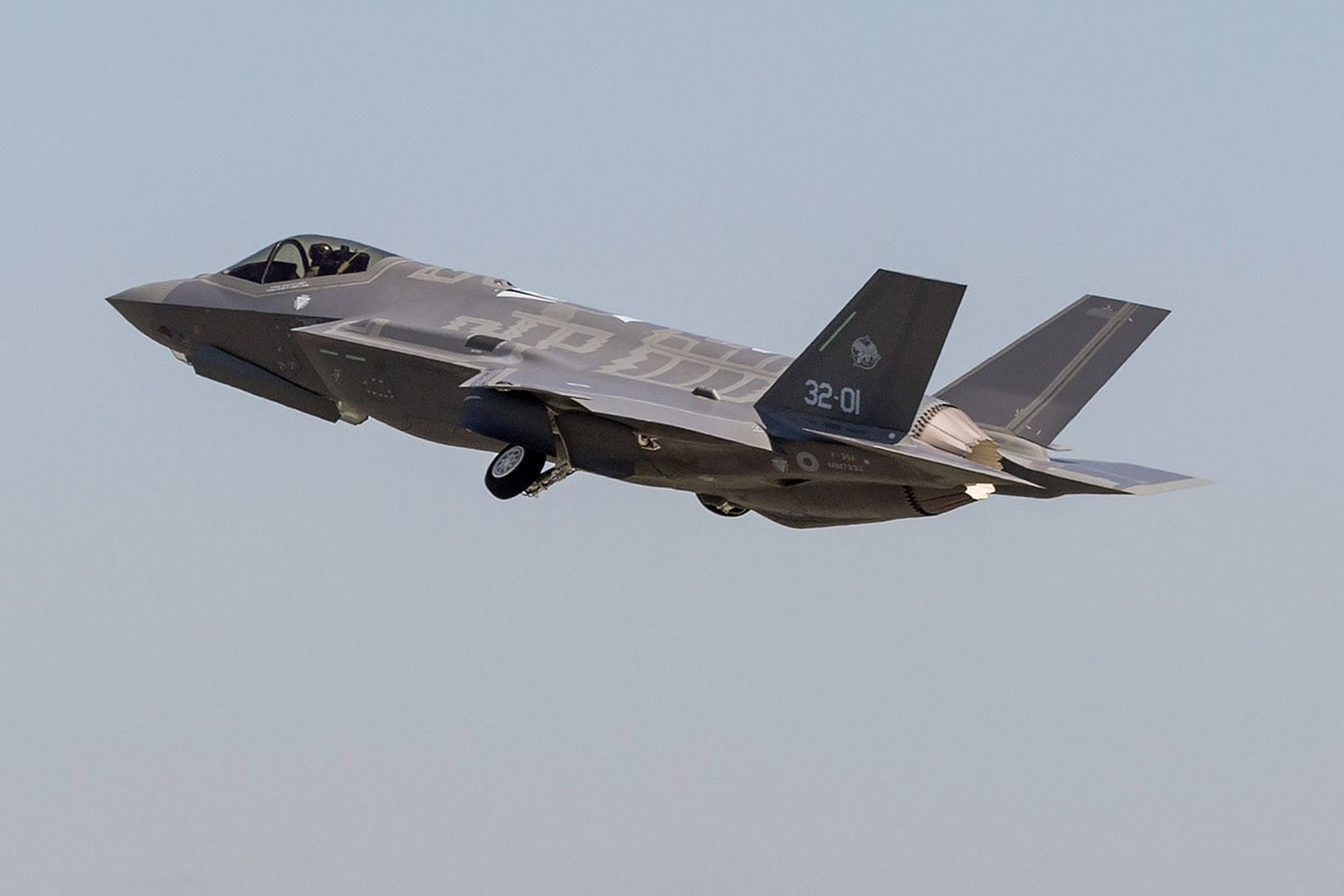
-
 Main AdminAn F-35A team parks the aircraft for the first time at Mountain Home Air Force Base, Idaho, Feb. 8, 2016. The warfighter arrived at the base to conduct operational testing in order to determine its combat capabilities. (U.S. Air Force photo by Airman 1st Class Connor J. Marth/RELEASED)
Main AdminAn F-35A team parks the aircraft for the first time at Mountain Home Air Force Base, Idaho, Feb. 8, 2016. The warfighter arrived at the base to conduct operational testing in order to determine its combat capabilities. (U.S. Air Force photo by Airman 1st Class Connor J. Marth/RELEASED)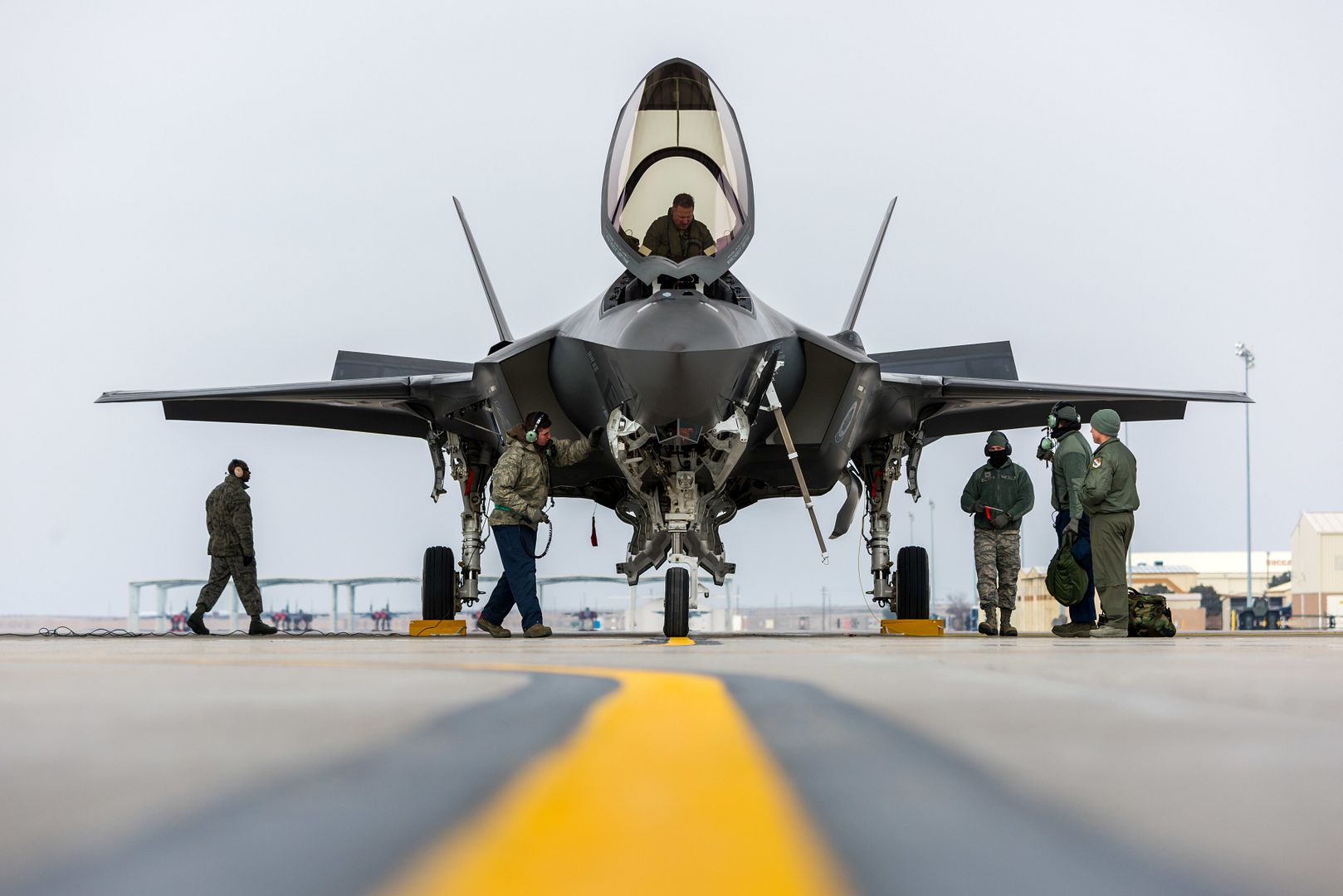
Two U.S. Air Force F-35A Lightning II, also known as Joint Strike Fighters, taxi after landing at Mountain Home Air Force Base, Idaho, Feb. 8, 2016. The F-35, visiting from Eglin Air Force Base, Fla., will be part of an initial operating capability test at the nearby range complex. (U.S. Air Force photo by Tech. Sgt. Samuel Morse/Released)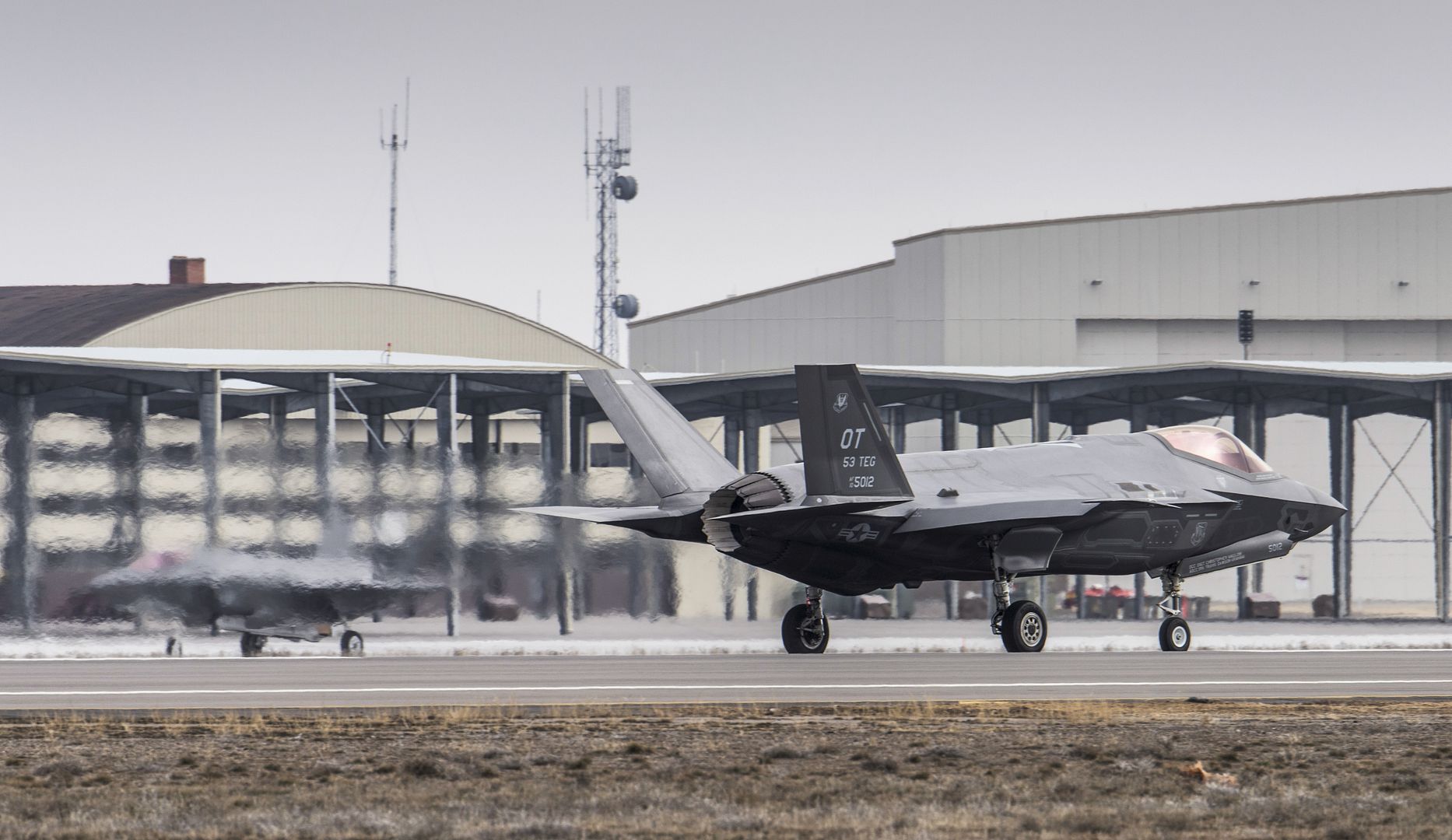
The inside of the cockpit of an F-35 Joint Strike Fighter Full Mission Simulator accurately replicates all sensors and weapons to provide a realistic mission rehearsal and training environment for pilots. (Courtesy Photo/Released)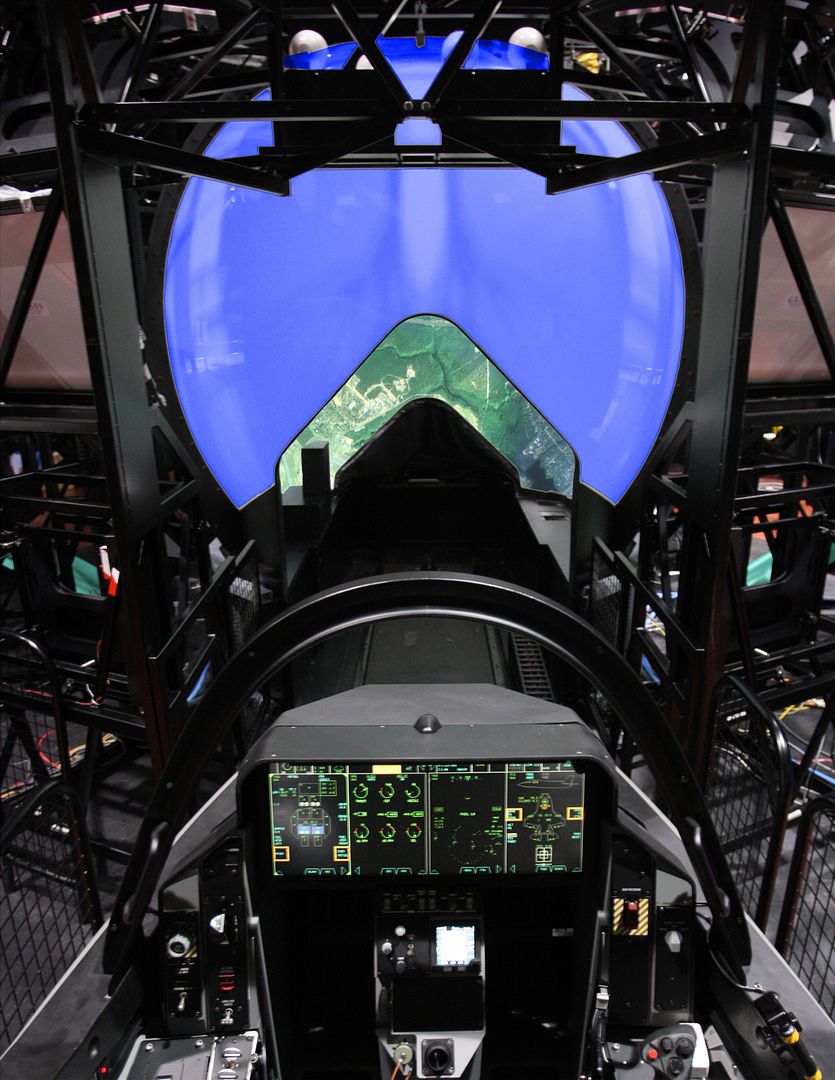
SOUDA BAY, Greece (AFNS) -- The first time the Air Force attempted to refuel an aircraft in flight, aircrews successfully stayed aloft for 151 hours. That was over 85 years ago, and the Air Force today has made quite a few innovations since then.
A KC-135 Stratotanker assigned to the 63rd Air Refueling Squadron at MacDill Air Force Base, Florida, is providing air refueling support to the F-16 Fighting Falcons assigned to the 480th Expeditionary Fighter Squadron over the skies of Souda Bay, Greece, during a flying training deployment slated for Jan. 22 to Feb. 15.
"The tanker plays a huge role in what we do to meet any sortie tasking that we could have," said Lt. Col. Timothy Murphy, the 480th EFS commander. "We can simulate the same length of sorties here that we could have if we were in combat."
The KC-135 crew kept the mission going and allowed pilots the opportunity to practice air-to-air refueling maneuvers.
"This is a training mission that we are doing here supporting their (flying training deployment)," said Capt. Shannon Callon, a KC-135 Stratotanker pilot assigned to the 63rd ARS. "We provide a stable platform of fuel to all of the American receivers."
The Stratotanker can deliver 1,000 gallons of fuel per minute, carry up to 200,000 pounds of fuel, 83,000 pounds of cargo and provide air refueling services to all branches of service, NATO and allied partners.
"As the boom operator, I'm the in-flight refueler in the back of the jet being the one who's actually controlling the boom and passing the fuel to the receivers," said Staff Sgt. Brittany Bahnet, a KC-135 Stratotanker boom operator assigned to the 63rd ARS. "Our job also includes cargo, passengers and backing up pilots when we're in the cockpit.
"I love it," Bahnet continued. "It's very exciting, it's one of those jobs that not a lot of people could ever say they do or experience; definitely better than being behind a desk."
The KC-135 has flown with the U.S. and Hellenic air forces each day and provided air refueling over the Greek ranges on the northwest bay of Crete, White Mountain range and over the Mediterranean Sea.
"They have been there to support us the whole time, it's great," Murphy said. "Their tanker crews have been awesome from the boomers to the pilots. Overall, this is really good training for everyone."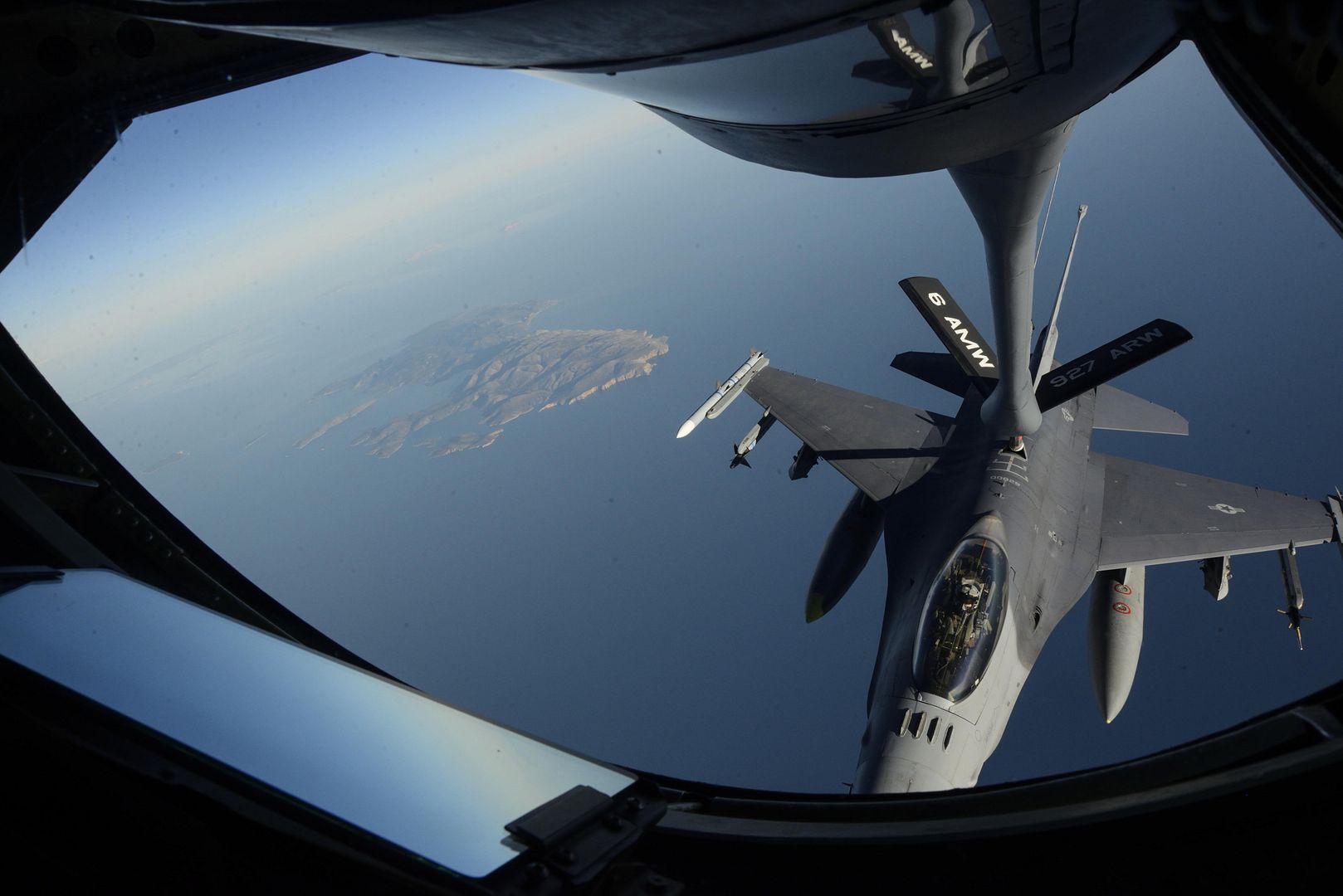
-
 Main Admin9 February 2016 Press Release
Main Admin9 February 2016 Press Release
The first A321neo equipped with CFM International LEAP-1A engines completed its maiden flight on February 9th from Hamburg, Germany. The aircraft, registration D-AVXB, was flown by Experimental Test Pilots Martin Scheuermann and Bernardo Saez Benito Hernandez. Accompanying them in the cockpit was Test-Flight Engineer G?rard Leskerpit and monitoring the flight?s progress were Flight-Test Engineers Sandra Bour Schaeffer and Emiliano Requena Esteban.
The flight lasted five hours and 29 minutes during which tests were performed on the engine speed variation (low/high), systems behaviour and to validate the aircraft?s flight envelope. The A321neo will join the NEO flight test fleet and perform a partial flight test programme to validate the impact on handling qualities, performance and systems. The first A321neo will be delivered at the end of 2016.
The A321neo is the largest member of the A320neo Family and incorporates many innovations including latest generation engines, Sharklet wing tip devices and cabin improvements, which together will deliver up to 20 percent in fuel savings by 2020. The A320neo flight test campaign has accumulated some 1,900 flight hours in over 640 flights since the first flight on 25th September 2014.
Post a reply
- Go to Next topic
- Go to Welcome
- Go to Introduce Yourself
- Go to General Discussion
- Go to Screenshots, Images and Videos
- Go to Off topic
- Go to Works in Progress
- Go to Skinning Tips / Tutorials
- Go to Skin Requests
- Go to IJAAF Library
- Go to Luftwaffe Library
- Go to RAF Library
- Go to USAAF / USN Library
- Go to Misc Library
- Go to The Ops Room
- Go to Made in Germany
- Go to Campaigns and Missions
- Go to Works in Progress
- Go to Juri's Air-Raid Shelter
- Go to Campaigns and Missions
- Go to Works in Progress
- Go to Skinpacks
- Go to External Projects Discussion
- Go to Books & Resources
